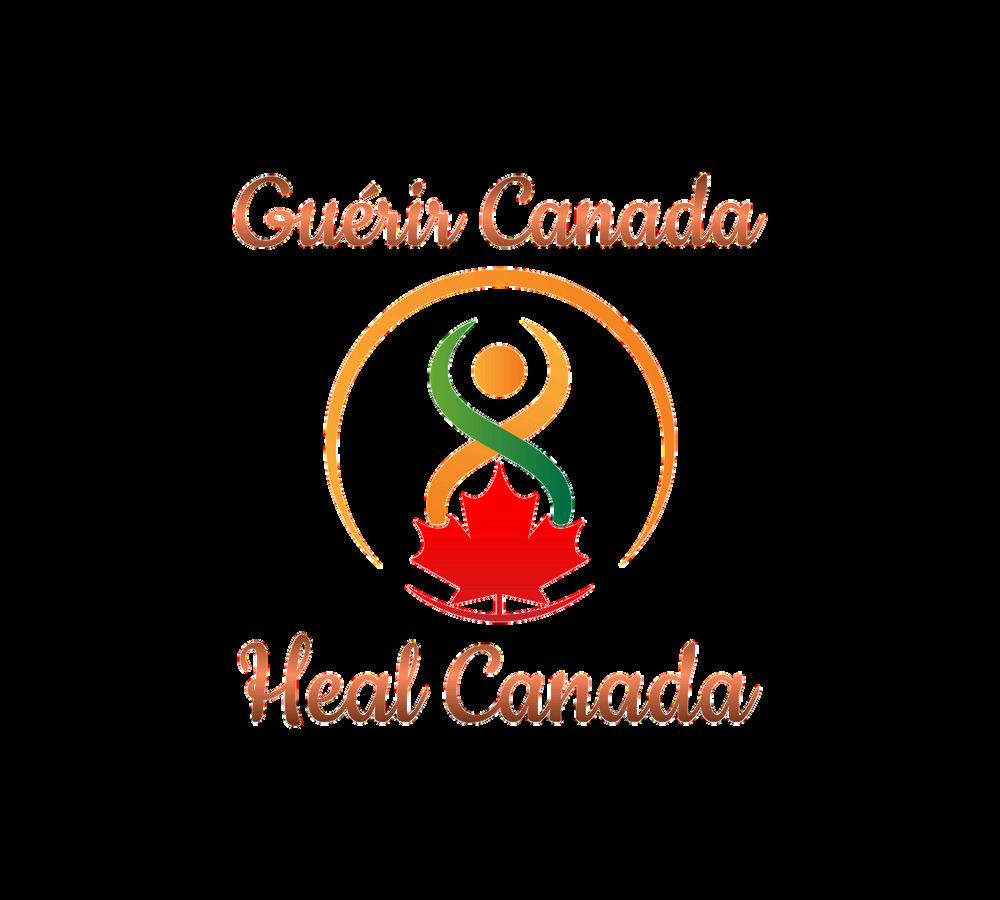


ArtificialIntellligence EmergentTreatments Belonging,Diversity,InclusionandEquity MentalHealth Seniors'Health PediatricHealth PatientJourney's LivingWell Plus Resources for Industry Stakeholders, Patients and Carepartners E Advocacy Empower, Engage, and Educate 3 June 2024 Issue 4 Heal Canada digital magazine
Founders Welcome
Issue dedicated topic: AI in Healthcare
AI, Luxury or Necessity?
The Emergence of AI in Healthcare
How AI Will Assist Primary Care
Can a Patient Trust AI Diagnosis?
CachEducation
Emerging Treatments
Health Canada’s new approval
CADTH call for patients input
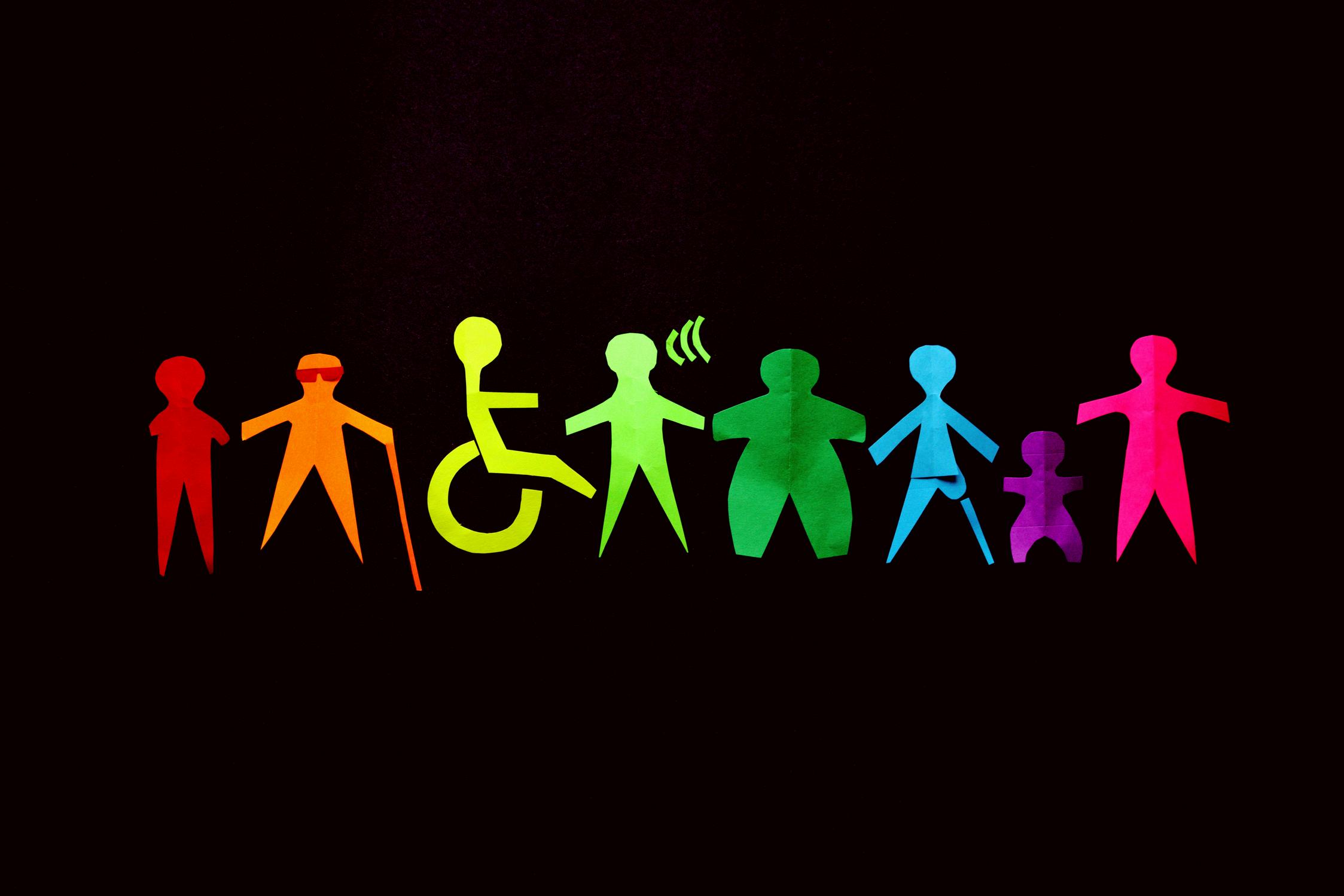
Diversity, Inclusion, and
Embracing DEI in healthcare
Mental Health
The age of anger
Reduce stress strategy
Reading for well-being
Senior Health
Dowsizing tips
Senior, sexe and intimacy
Say yes2next !
Pediatric Health
Role of AI in child health

Advocacy Spotlight
Melanoma awareness month
Melanoma Canada
Patient Journey
Rare blood cancer–my journey
Listen, It’s My Heart
Living Well
Cardiologist secrets
Satisfy Your Sweet Tooth
Quick + Simple mini-meals Ask the Professional Resources

of contents Visit Heal Canada.org to download this current issue E3 ADVOCACY -2
Table
Equity
Smile File References Supporters Heal Canada Team 3 4 5 6 9 11 16 19 20 21 24 25 29 30 34 36 38 39 41 44 45 46 49 51 53 56 57 59 61 66 69 72 75 79 83 84 85 86
Founders Note
Welcome to our Fourth Issue, of E3 Advocacy. A digital publication for Patient Advocates and Patient Centricity
This edition is focused on AIArtificial intelligence and how the importance of AI is important to Healthcare and Patient Centricity


We'redeeplygratefultoourreadersfortheircontinuedinterest andsupport.Yourengagementdrivesustobringinsightfuland valuablecontenttoeachissue.BysubscribingtoHealCanada DigitalMagazine,you'llstayconnectedwithusandgainaccessto futureissuesthatexploretopicsthatmattertoyouandthe healthcarecommunity.Visitourwebsiteat https://www.healcanada.org tobecomeasubscriberandenjoy thesebenefits.
EachIssuewehavebeen addingnewsectionstobeinclusiveof entireHealthcareEcosystem.
Wearehumbledatthemomentumwearegainingwiththe informationtoourreaders.Thisdigitalpublicationisbeingread by patientadvocates,patients,carepartnersacrosstheworld. Toensurethatourglobalreadersfeelincludedinourinformation, wearerebrandingourtitleofthismagazine/journalto E3Advocacy! Empower,Engage,Educate.
Ournewpublication,MyBloodMyHealth,undertheeditorial supervisionofourChiefScientificOfficer,BrigitteLeonard. In thisdigitalpublication,wewillfocusonPatientAdvocacy,forall Bloodrelatedissues.
Thankyouforbeingapartofourjourney,andwelcometo anotherenlighteningissue!
 Cheryl Petruk, MBA, B.Mgt.
Cheryl Petruk, MBA, B.Mgt.
Founder Heal Canada


Disclaimer:ThePatientAdvocacyDigitalMagazineprovides generalinformationandresourcestopromotepatient empowermentandawareness.Thecontentisnota substituteforprofessionalmedicaladviceortreatment. Alwaysconsultwithqualifiedhealthcareprofessionalsfor personalizedguidanceregardingyourspecificmedical conditionorsituation.
www.healcanada.org
Heal Canada is a registered Not For Profit Organization in Canada
E3 ADVOCACY -3 Advocacy Spotlight

AI in HealthCare
AI in healthcare: Is it a luxury or a necessity?
by Brigitte Leonard, Ph.D
Artificial Intelligence (AI) is a game-changer in healthcare, offering immense potential to enhance diagnostics and patient management. While there may be concerns about its impact, the real focus should be on how to safely integrate AI for the benefit of patients. The speed of scientific knowledge that influences clinical practice has surpassed human capacity, making AI a necessary tool in our healthcare system. The healthcare system can offer better support for people suffering from rare conditionswithAI.

In the past, diseases were classified by anatomic sites as the underlying molecular abnormalities were beyond our reach. However, with improved molecular comprehension, scientists can now reclassify different pathologies, leading to more efficient access to treatment. The pace of change in diagnostic and treatment guidelines is unprecedented. In the near future, healthcare professionals who embrace AI will be best equipped to provide services in line with the latest knowledge. With AI, the best practices currently limited to specialized academic hospitals can be madeuniversallyaccessible,revolutionizinghealthcare.
As a patient advocacy group, we greatly respect healthcare professionals. We witness their dedication to do everything humanly possible to treat us or our loved ones with dignity. However, the facts are undeniable. Studies have estimated that diagnostic errors affect 5% to 10% of adults in the US (1, 2). Imagine more than 5% receiving a wrong diagnosis, meaning they receive the wrong treatment. These individuals continue to suffer from their disease, impacting their QoL and potentially their overall survival. Besides the human cost, this situation overloads the healthcare systems in terms of human resources and dollars. AI has the potential to reduce these numbers significantly. For instance, AI from Babylon Health scored 82 percent in diagnostic accuracy instead of the human average mark of 72 percent (2) Another estimate suggests that machine learning algorithms can make a diagnosis accurate 87% of the time, and with deep learning, they canreachasuccessrateof97-98% (3).
As we integrate AI into healthcare, we must engage in robust discussions about the regulations and mechanisms that will protect patients. Equally important is optimizing healthcare professionals' roles regarding this new technology because their role will remain crucial. However, amidst these considerations, we must remember that AI is not a luxury but a necessity inourhealthcaresystem.
E3 ADVOCACY - 5
The Emergence of AI in Healthcare: Transforming Patient Care at All Levels.
by Cheryl Petruk, MBA, B.Mgt.
Artificial Intelligence (AI) has rapidly emerged as a transformative force in healthcare, revolutionizing how medical practitioners diagnose, treat, and manage patient care. From primary care physicians to specialized surgeons, the integration of AI is enhancing efficiency, accuracy, and patient outcomes. This article explores the multifaceted roles of AI in healthcare and its impact across various levels of healthcare practitioners, including a real-life case study to illustrate its impact.

PrimaryCarePhysicians:EnhancedDiagnosisandPatientMonitoring
In primary care, AI-powered tools are proving to be invaluable They aid physicians in early diagnosis and ongoing patient monitoring, leading to more accurate and timely treatments. AI algorithms can analyze vast patient data, including electronic health records (EHRs), to identify patternsandpredictpotential healthissues.

For instance, AI-driven diagnostic tools can analyze symptoms and medical history to suggest possible conditions, enabling doctors to make moreinformeddecisions.
Moreover, wearable devices equipped with AI capabilities are transforming patient monitoring These devices track vital signs, activity levels, and other health metrics in real time, allowing for continuous monitoring of chronic conditions such as diabetes and hypertension Primary care physicians can leverage this data to provide personalized careplansandtimely interventions.
SpecialistPractitioners:PrecisionMedicineandAdvancedImaging
Specialist practitioners, such as cardiologists, oncologists, and radiologists, are harnessing AI for precision medicine and advanced imaging. AI algorithms can analyze medical images, such as Xrays, MRIs, and CT scans, with remarkable accuracy, often detecting anomalies the human eye might miss. This capability is precious in fields like radiology, where AI can assist in identifying tumours,fractures,andotherabnormalities.
In oncology, AI-driven tools enable precision medicine by analyzing genetic data and identifying specific cancer-linked mutations. This information allows oncologists to tailor treatments to the individualpatient'sgeneticprofile,improvingtheefficacyoftherapiesandreducingsideeffects.
RoboticAssistanceandSurgicalPlanning
In the realm of surgery, AI is playing a crucial role in enhancing precision and outcomes. Robotic surgical systems, guided by AI, offer unparalleled precision in procedures ranging from minimally invasive surgeries to complex operations. These systems can execute delicate maneuvers with stability and accuracy, reducing the risk of complications and improving recoverytimes.
E3 ADVOCACY - 6
The Emergence of AI in Healthcare: Transforming Patient Care at All Levels con`t
AI is also revolutionizing surgical planning. Preoperative planning tools use AI to analyze patient data and simulate surgical procedures, allowing surgeons to anticipate potential challenges and optimize their approach. This level of preparation contributes to better surgical outcomesandincreasedpatientsafety.
HealthcareAdministrators: Streamlining OperationsandReducingCosts
AI’s impact extends beyond direct patient care to healthcare administration, where it is streamlining operationsandreducingcosts.

AI-powered systems can automate routine administrative tasks, such as appointment scheduling, billing,andclaimsprocessing,freeingupstafftofocusonpatientcare.
Additionally, predictive analytics can help healthcare administrators forecast patient demand, optimize resource allocation, and manage supply chains more efficiently. This operational efficiency translates to cost savings and improved service delivery, benefiting practitioners and patients.

Case Study: AI in Breast Cancer Diagnosis
One notable case study demonstrating the impact of AI in healthcare is its application in breast cancer diagnosis. Researchers at Google Health developed an AI system to improve the accuracy of breast cancer detection in mammography. In a study involving thousands of mammograms, the AI system outperformed radiologists in detecting breast cancer, reducing false positives by 5.7% and false negatives by 9.4% (McKinney et al., 2020).
This AI system was trained on a diverse dataset from the UK and US and demonstrated its ability to generalize across different populations. The study highlighted the potential of AI to enhance diagnostic accuracy, reduce the workload on radiologists, and ultimately improve patient outcomes.
EthicalConsiderationsandFutureDirections
While integrating AI in healthcare offers numerous benefits, it raises important ethical considerations. Ensuring patient data privacy, addressing biases in AI algorithms, and maintaining transparencyinAIdecision-makingprocessesarecriticalchallengesthatmustbeaddressed.
E3 ADVOCACY - 7
The Emergence of AI in Healthcare: Transforming Patient Care at All Levels con`t
Looking ahead, the future of AI in healthcare is promising. Ongoing advancements in machine learning, natural language processing, and robotics are poised to enhance patient care further and transform healthcare practices. Collaboration between technologists, healthcare practitioners, and policymakers will be essential in realizing AI's full potential while safeguarding ethical standards.
The emergence of AI in healthcare is a game-changer, providing powerful tools that enhance the capabilities of healthcare practitioners at all levels. From primary care physicians to specialized surgeons and healthcare administrators, AI is driving improvements in diagnosis, treatment, patient monitoring, and operational efficiency. As AI continues to evolve, its integration into healthcare promises to deliver even more significant benefits, ultimately leading to better patient outcomes and a more efficient healthcare system.

E3 ADVOCACY - 8
How AI Will Assist Primary Care Doctors in Optimizing Initial Diagnosis of Patients.
By Cheryl Petruk, MBA, B.Mgt.
Artificial Intelligence (AI) is revolutionizing various sectors, and healthcare is no exception. Primary care doctors, who are often the first point of contact for patients, can significantly benefit from AI in optimizing initial diagnoses. This article explores how AI technologies are poised to enhance the accuracy, efficiency, and overall quality of patient care in primary settings
EnhancedDiagnosticAccuracy

One of the most promising aspects of AI in primary care is its potential to improve diagnostic accuracy. AI algorithms, trained on vast medical records, images, and clinical studies datasets, can identify patterns and correlations that humans might miss. For instance, AI can analyze symptoms and medical history to suggest possible diagnoses, often with a higher degree of precision than traditional methods. The benefit of AI is particularly true for identifyingrarediseasesorconditionswithnon-specificsymptoms.
EfficientTriageandPrioritization
AI can assist primary care doctors in triaging patients more effectively. By analyzing patient data, AI systems can determine the urgency of each case and prioritize appointments accordingly, ensuring that patients with severe or life-threatening conditions receive immediate attention. At the same time, those with less critical issues are seen later. Such efficient triage can help reduce waittimesandimprovethepatientexperience.
PersonalizedTreatmentPlans
AI can analyze a patient’s medical history, genetic information, lifestyle, and other factors to recommend personalized treatment plans. This approach ensures that treatments are tailored to individual patients, improving outcomes and reducing the risk of adverse reactions. For instance, AI can suggest the most effective medications for a patient based on their genetic makeup, thereby optimizingthetreatmentprocessfromtheinitialdiagnosis.
E3 ADVOCACY - 9
How AI Will Assist Primary Care Doctors con’t
SupportforDifferentialDiagnosis
Primary care doctors often face the challenge of differentiating between diseases with similar symptoms. AI can support differential diagnosis by comparing patient data with extensive medical databases to suggest potential conditions. AI helps doctors consider broader possibilities and reduces the likelihood of misdiagnosis. AI-driven differential diagnosis tools can act as a second opinion, providing additionalconfidenceinthediagnosticprocess.
ContinuousLearningandImprovement
AI systems can continuously learn and improve from new data, ensuring that diagnostic tools remain up-to-date with the latest medical research and clinical guidelines. This dynamic learning capability allows primary care doctors to benefit from cutting-edge knowledge and best practices without constant manual updates. AI can also provide ongoing education for doctors, offering insights into new diagnostic techniques and emerginghealthtrends.
StreamlinedAdministrativeTasks
Beyond direct diagnostic support, AI can automate various administrative tasks, liberating more time for doctors to focus on patient care. AI-powered systems can efficiently handle appointment scheduling, patient follow-ups, and electronic health record management, significantly reducing the administrative burden on primary care practices. This increased efficiency allows doctors to spend more time on patient interactions and diagnostic activities and gives them a sense of control over their workload.
ImprovedPatientEngagement
AI can enhance patient engagement by providing tools for remote monitoring and selfmanagement of health conditions. For example, AI-driven apps can track symptoms, medication adherence, and lifestyle changes, providing real-time feedback to both patients and doctors. This continuous monitoring fosters collaboration between the doctor and the patient, helping in the early detection of potential issues and ensuring timelyintervention,furtheroptimizingtheinitialdiagnosisandsubsequentcare.
Integrating AI in primary care can transform how initial diagnoses are made, enhancing accuracy, efficiency, and personalization. By leveraging the power of AI, primary care doctors can provide better care, improve patient outcomes, and stay at the forefront of medical innovation. As AI technologies evolve, their role in primary care will undoubtedly expand, paving the way for a new era of healthcare excellence.
E3 ADVOCACY - 10
Can a Patient Trust AI in Optimizing A Diagnosis?
by Cheryl Petruk, MBA, B.Mgt.
In the rapidly evolving healthcare landscape, Artificial Intelligence (AI) has emerged as a powerful tool with the potential to revolutionize diagnosis. As AI technologies become increasingly integrated into medical practice, a pressing question arises: Can patients trust AI in optimizing their diagnoses? This article explores the benefits, concerns, and ethical considerations surrounding the use of AI in medical diagnostics.
ThePromiseofAIinMedicalDiagnostics

AI has demonstrated remarkable capabilities in analyzing vast amounts of data quickly and accurately. By processing patient records, medical images, genetic information, and other data, AI systems can identify patterns and correlations that may elude even the most experienced human practitioners. This ability to sift through data quickly and efficientlyholdsgreatpromiseforimprovingdiagnosticaccuracyandoutcomes.
For example, AI algorithms have shown proficiency in detecting early signs of diseases such as cancer, diabetes, and cardiovascular conditions, often more accurately than traditional methods. In radiology, AI can assist in interpreting medical images, reducing the risk of human error and ensuring that potential issues are identified promptly. These advancements suggest that AI can be a valuable ally in the diagnostic process, enhancing thecapabilitiesofhealthcareprovidersandcontributingtobetterpatientcare.
AddressingConcernsandBuildingTrust
While the potential benefits of AI in diagnostics are significant, patients understandably have concerns about trusting machines with their health. Key considerations include the accuracy of AI predictions, data privacy, and the potential for bias in AI algorithms. AddressingtheseconcernsiscrucialtobuildingtrustinAI-baseddiagnostictools.
AccuracyandReliability
Patients need assurance that AI systems are accurate and reliable. Rigorous testing, validation, and continuous monitoring of AI algorithms are required to ensure they meet high-performance standards. It also involves transparency in how AI systems make decisions, allowing healthcare providers to understand and explain the reasoning behindAI-generateddiagnoses.

E3 ADVOCACY - 11
Can a Patient Trust AI in Optimizing Diagnosis? con’t
DataPrivacyandSecurity
Protecting patient data is paramount. AI systems rely on large datasets, which raises concerns about data privacy and security. Healthcare organizations must implement robust measures to safeguard patient information, ensure compliance withregulations,andfostertrustintheuseofAI.
BiasandFairness

AI algorithms can inadvertently perpetuate biases in the data they are trained on. To mitigate this risk, developers must strive for diverse and representative datasets and continuously assess AI systems for potential biases. Ensuring fairness and equity in AI-driven diagnostics is essential to maintainingpatienttrust.
EthicalConsiderations

The ethical implications of AI in diagnostics extend beyond accuracy and privacy. Patients must feel confident that AI systems are used responsibly and ethically Key ethical considerationsinclude:
• Informed Consent: Patients should be informed about using AI in their diagnosis and understand how it works Informed consent is crucial to ensuring patients are comfortable with AI's role in theirhealthcare.
• Human Oversight: AI should augment, not replace, human expertise. Maintaining human oversight in the diagnostic process ensures that AI recommendations are validated by experienced healthcare professionals who can consider the broaderclinical context.

• Transparency and Accountability: Healthcare providers and AI developers must be transparent about AI systems' capabilities and limitations. Establishing accountability for AI-drivendecisionsisessential tobuilding andmaintaining trust.
E3 ADVOCACY - 12
TheFutureofAIinDiagnostics
The integration of AI in medical diagnostics is still in its early stages. Still, the potential for positive impact is undeniable. As AI technologies evolve, their accuracy and reliability will improve, addressing many current concerns. Collaborative efforts between AI developers, healthcareproviders,andregulatorybodieswillensurethatAIisusedresponsiblyandethically. For patients, the future of AI in diagnostics promises more accurate, timely, and personalized care. By fostering transparency, addressing ethical concerns, and maintaining a focus on patient-centred care, the healthcare industry can build the trust needed to fully realize AI's benefitsinoptimizingdiagnoses.
AI can potentially transform medical diagnostics, offering significant benefits in terms of accuracy and efficiency. While there are valid concerns and ethical considerations, a patientcentred approach emphasizing transparency, privacy, and human oversight can help build trust in AI-driven diagnostic tools. As we navigate this new frontier in healthcare, it is crucial to ensure that patients remain at the heart of these technological advancements, ultimately enhancing the qualityofcareandimprovinghealthoutcomes.

Can a Patient Trust AI in Optimizing Diagnosis? con’t E3 ADVOCACY - 13 Canadian MPN Network Patient Advocacy and Education Group Providing MPN Patients Support and Education Info@canadianmpnnetwork.ca

E3 ADVOCACY -14


Patient Advocacy Training contact: Info@CACHEducation.org E3 ADVOCACY - 15
Fall into Learning: CACHEducation’s 2024 Course Schedule.
by Cheryl Petruk, MBA, B.Mgt.
There is a significant need in Canada to provide patient advocates with a comprehensive educational program that adequately prepares them to address the many challenges they face when starting, maintaining, and growing a patient organization.
Most patient advocacy groups are managed from kitchen tables, where leaders and staff are "trained" by word of mouth and through learning from their mistakes. CACHEducation aims to change this by offering college-level courses that certify patient advocates, enabling them to successfully navigate the complexities of running a non-profit organization in Canada. These courses will teach patient advocates essential skills such as fundraising, recruiting and retaining volunteers,writinggrants,fundingresearchers,andcommunicatingwithgovernmentagencies.

CACHEducation inaugural course, Introduction to Patient Advocacy in Canada, which ran earlier this year, received outstanding reviews. Most students rated the program as excellent or above average and all respondents indicated that the program was fair, balanced, and provided valuable informationapplicabletothemandtheirteams.
Committed to building on the success of the introductory course in 2023/2024, which enrolled 25 students, CACHEducation will offer another opportunity for students to enroll in the introductory courseinFall2024.(SeeTable1forlessonbreakdown).
What is patient advocacy Drug development: Introduction Review ad case Studies Introduction to the Canadian health care system Clinical trials: Introduction Online presence: Website design and social media Clinical trials: Introduction E3 ADVOCACY - 16
Treatment options: Introduction Level One Courses Starting September 2024! Register now! www.cacheducation.org
Additionally, an advanced class focused on advocacy group management will be available this fall. (See Table 2 for lesson breakdown). Each course is scheduled to start in September and will consist of eight one-hour, live, online classes led by patient advocate and professional educator.
About CACHEducation
CACHEducation (https://cacheducation.org/) is a not-for-profit organization that began in 2022. With over 25 years of collective experience in patient advocacy, the founding Board Members of CACHEducation are created an organization focused on properly educating individuals interested in patient advocacy about the essential knowledge needed to succeed.
To register for upcoming courses or learn more about CACHEducation, visit www.cacheducation.org

Insurance and legal issues Communication & Online Presence Communications: Public speaking Staff and Volunteer Retention Grant writing, fundraising Ledership Skills
E3 ADVOCACY - 17

www.cllcanada.org E3 ADVOCACY - 18
Emerging Treatments
 Brigitte Leonard, PhD. Chief Scientific Officer, Heal Canada
Brigitte Leonard, PhD. Chief Scientific Officer, Heal Canada
New treatments offer hope to patients and their loved ones. Here, we present new therapies that are available to Canadians.
This section also addresses challenges around access to new medication. Our readers will find important information here to help them understand Canada's drug review processes.
An informed and engaged patient is an empowered one. We aim to equip our readers with the tools and knowledge to navigate the complex healthcare landscape because, more than ever, patients need to raise their voices, to get access to services. Accessing innovative medicines can save patients' lives.
HealthCanadarecentapprobation.
by Brigitte Leonard,Ph.D
HealthCanadaapprovedthreenewsubstancedrugssincethepreviousissues.
Anewoptionforpatientswithdiabetes
Health Canada approved Awiqli, a long-acting insulin (insulin icodec) for treating adults with diabetes, in March 2024. This new insulin developed by Novo Nordisk is more convenient for patients and only allows an injection once weekly. In a clinical trial involving 588 patients with type II diabetes, Awiqli provided superior blood controloveradailytreatmentofover26weeks.

Anewoptionforpatientswithirondeficiency

Health Canada approved FERINJECT (ferric carboxymaltose) in March 2024 distributed by CSL Behring. It is an intravenous fer supplement used to treat iron deficiency anemia (IDA) in oneyear and older patients when oral iron preparations are neither tolerated nor effective. FERINJECT can also treat iron deficiency (ID) in adult patients with heart failure to improve exercise capacity. Iron supplements can be needed when patients have symptoms of iron deficiency, such as low energy, fatigue, lack of concentration, breathlessness during exercise, etc.(2)
A new option for patients with multiple myelomawhofailedseverallinesoftreatment
Despite therapeutic advancements in multiple myeloma, resistance to treatment remains a significant challenge, leading to poor prognostic for many patients. More than 80% of patients with multiple myeloma will suffer from disease progression than die. Most will develop resistance to all three therapeutic classes: IMIDs, antibody therapy (CD-38) and bcl inhibitor. So, newtherapeuticoptionsareneeded.(3)
Health Canada approved Talvey (talquetamab) in April developed by Janssen. The product is approved for treating adult patients with multiple myeloma who have failed at least three prior lines of therapy, including differenttherapeuticclasses.

E3 ADVOCACY - 20
by Brigitte Leonard,Ph.D


E3 ADVOCACY - 21 CADTHcallforpatientinputforoncologyproducts.
Subscribe to receive your digital copy of Heal Canada visit www.healcanada.org
by Brigitte Leonard,Ph.D


E3 ADVOCACY - 22 Watch our website for the My Blood My Health digital publication mybloodmyhealth.ca CADTHcallforpatientinputfornon-oncologyproducts.

Belonging, Diversity, Inclusion and Equity
Welcome to the Belonging, Diversity, Inclusion and Equity section of Heal Canada's Digital Magazine. In this section, we provide information focusing on ensuring that BDEI is part of the patient conversation in our Health ecosystem. Our focus is to illuminate the pathways through which individuals grappling with health challenges can not only find their voice but also harness it to drive their own journey.
Healthcare and the patient experiences should not be determined on social determinants of health.
We believe that an informed and engaged patient is an empowered one, and through enlightening articles, expert insights, and inspiring stories, we aim to equip our readers with the tools and knowledge necessary to navigate the complex landscape of health care.
Embracing Diversity, Equity, and Inclusion in Patient Advocacy:
A Call for Healthcare Transformation
by Cheryl Petruk, MBA, B.Mgt.
In the evolving landscape of healthcare, the principles of diversity, equity, and inclusion (DEI) have emerged as pivotal in ensuring that all patients receive the highest quality of care. Patient advocacy, at its core, is about championing patients' rights, needs, and voices. However, to be truly effective, advocacy must be deeply rooted in DEI, addressing the social determinants of health that often act as barrierstoequitablehealthcare.

UnderstandingDiversity,Equity,andInclusioninHealthcare
Diversity in healthcare refers to differences that include race, ethnicity, gender, age, socioeconomic status, sexual orientation, disability, and religion. Equity involves recognizing and addressing the disparities and barriers individuals face, ensuring everyone has access to the same opportunities. Inclusion means creating environments where individuals or groups can feel welcomed,respected,supported,andvaluedtoparticipatefully. In patient advocacy, embracing DEI means recognizing different populations' unique challenges and working to eliminate disparities. This approach improves individual patient outcomes and strengthenstheoverallhealthcaresystem.
TheRoleofSocialDeterminantsofHealth
The social determinants of health are the conditions in which people are born, grow, live, work, andage.Thesefactorssignificantlyimpacthealthoutcomesandinclude:
•EconomicStability:Income,employment,andfinancialsecurity.
•Education:Accesstoqualityeducationandlifelonglearning.
•HealthcareAccess:Availabilityandqualityofhealthcareservices.
•NeighborhoodandEnvironment:Safehousing,transportation,andcommunityresources.
• Social and Community Context: Support systems, social integration, and exposure to violence or discrimination.
Addressing these determinants is crucial for achieving health equity. For instance, a patient’s ability to manage a chronic condition may be severely limited by financial constraints, lack of access to nutritious food, or unstable housing. Advocacy efforts must, therefore, extend beyond theclinicalsettingtoaddressthesebroaderissues. ChallengesinAchievingDEIinPatientAdvocacy
E3 ADVOCACY - 24
Embracing Diversity, Equity, and Inclusion in Patient Advocacy con`t
Despite the growing awareness of DEI, several challengespersist:
1. Implicit Bias: Healthcare professionals may unconsciously hold biases that affect patient interactions, leading to unequaltreatment.
2. Cultural Competency: A lack of understanding of different cultural backgrounds can result in miscommunication and mistrustbetweenpatientsandproviders.
3. Access Barriers: Socioeconomic disparities often limit accesstohealthcareservicesformarginalizedpopulations.
4. Policy Gaps: Existing healthcare policies may not adequatelyaddresstheuniqueneedsofdiversepopulations.
StrategiesforImprovingDEIinPatientAdvocacytoovercomethesechallenges,a multifacetedapproachisnecessary:
1. Education and Training: Continuous education on cultural competency, implicit bias, and the socialdeterminantsofhealthshouldbemandatoryforallhealthcareprofessionals.
2. Community Engagement: Building strong relationships with diverse communities helps us understandtheirspecificneedsanddeveloptailoredadvocacystrategies.
3. Policy Advocacy: Advocating for policies that address health disparities and promote equity is essential. This includes pushing for reforms in healthcare financing, expanding access to care, andenhancingsocialsupportsystems.
4. Data Collection and Analysis: Collecting and analyzing data on health outcomes across differentpopulationscanhelpidentifydisparitiesandinformtargetedinterventions.
5. Patient-Centered Care: Ensuring that care is tailored to the individual needs of each patient, respectingtheircultural,social,andeconomiccontext.
ThePathForward
Improving DEI in patient advocacy is a moral imperative and a practical necessity for a robust healthcare system. As advocates, we must strive to see beyond patients' immediate clinical needs and address the broader social determinants that impact their health. By embracing diversity, promoting equity, and fostering inclusion, we can ensure that every patient receives thecaretheydeserve,ultimatelyleadingtoahealthier,morejustsociety.
At Heal Canada, we are committed to advocating for these changes and supporting initiatives to bridge the gaps in our healthcare system. Together, we can create a future where healthcare equityisnotanaspirationbutareality.
Cheryl Petruk is a dedicated caregiver and advocate with extensive experience in patient advocacy, particularly in the context of myeloproliferative neoplasms. She is the founder of Heal Canada and a contributor to the My Blood My Health digital magazine. Cheryl holds an MBA in Community Economic Development and a Bachelor of Management in HR/LR. Cheryl also teachesintheHealthcareAdministrationProgramataPublicCollegeinOntario,Canada.
E3 ADVOCACY - 25


for more information how LCA can help you info@latinxcanceralliance.org E3 ADVOCACY - 26


Heal Canada and Pat ADV Hub in the USA have embarked on a collaborative journey, aiming to revolutionize the realm of patient advocacy across North America. This pioneering partnership brings together two influential organizations from neighboring countries, combining their extensiveexpertiseandresources.
The objective is to expand and enhance the access to critical information for patient advocates, ensuring that individuals across the continent receive the best possible support and guidance in theirhealthcarejourneys.
By bridging the gap between Canadian and American healthcare advocacy, this alliance promises to foster a more informed, empowered, and connected community of patient advocates, significantly contributing to the improvement of healthcare experiences for countlessindividuals.
email: patadvhub@gmail.com

www.patadvhub.org
E3 ADVOCACY - 27
Mental Health
Welcome to the Mental Health section of Heal Canada Digital Magazine, a dedicated space where we embrace the journey towards mental wellness with open arms and open hearts. In this edition, we delve into the empowering world of patient advocacy, engagement, empowerment, and education. Our focus is to illuminate the pathways through which individuals grappling with mental health challenges can not only find their voice but also harnest it to drive their own journey.
We believe than an informed and engaged patient is an empowered one and through enlighteninig articles, expert insights, and insipiring stories, we aim to equip our readers with the tools and knowledge necessary to navigate the complex landscape of mental health care.
Join us as we explore how patient advocacy, active engagement and comprehensive education can transform the experience of mental health care, turning obstacles into opportunities for growth and healing.
TheAgeofAnger:StrategiesforControllingaGrowingEmotionalCrisis.
byRod Mitchell, MC, MSc, RPsych
Anger is a powerful emotion that, when uncontrolled, poses significant challenges to personal relationships, professional environments, and public safety Recent data presents a troubling trend: a 2023 Gallup global survey revealed that the percentage of adults worldwide experiencing significant anger has reached record highs, with 23% reporting that they felt a lot of anger the previous day [1]. This trend mirrors a broader societal perception, with 64% believing that the world is becoming increasingly angrier [2].



The consequences of this growing anger are widespread. Approximately 1 in 3 people have a close friend or family member who struggles with controlling their anger, highlighting the extent of the issue in personal relationships [2]. Widespread anger also compromised road safety, with 80% of drivers involved in road rage incidents and 25% admitting to acts of aggression themselves [3]. These statistics highlight the urgency of addressing anger management and underscore the need foreffectivestrategiestomitigateitsimpactonourdailylivesandwell-being.
RecognizingSignsofProblematicAnger
Identifying the signs of problematic anger is essential to managing it effectively. Here are some commonindicatorsthatangermaybeanissue:
FrequentIrritation: Easilyannoyedorupsetbyminorissues.
VerbalOutbursts: Oftenyellingorarguingmoreintenselythanthesituationdemands.
RuminatingonSlights: Dwellingonperceivedoffencesorupsettinginteractions.
SlowtoCoolDown: Difficultycalmingdown,withangerlastingforalongtime.
Damaged Relationships: Regular conflicts with friends, family, or coworkers because of aggressiveordefensivereactions.
By recognizing when anger adversely impacts our lives, we can start using techniques that help us handle this problematic emotion better. Consistent use of anger management tools helps to improveouremotionalhealthandqualityoflife.
ManagingAngerintheMoment:GroundingTechniques
Anger activates the body's "fight or flight" response, preparing you to handle perceived threats. This physiological reaction can manifest as a rapid heartbeat, tightened muscles (particularly around the jaw and shoulders), a warming flush across the body, clenched fists or jaw, and quickenedbreathing—signsthatyourbodybracesforastressfulsituation.
Recognizing these signs is crucial for controlling one's emotional response. Grounding techniques like Box Breathing and the 5-4-3-2-1 Technique effectively manage these intense emotions and preventangerfromescalating.
E3 ADVOCACY - 29
The Age of Anger con`t
Box Breathing: This simple technique helps calm the nervous system and shift your focus away from angerinducingthoughts.
Slowlyexhalealltheairfromyourlungs. 1. Gentlyinhalethroughyournosetoaslowcountoffour. 2. Holdyourbreathforacountoffour. 3. Exhalethroughyourmouthforacountoffour. 4. Hold your breath again for a count of four before inhaling again. Repeat this cycle until you feel your body begintorelax.
5. The 5-4-3-2-1 Technique helps you detach from emotional pain and intense feelings by focusing on your immediate environment.Practiceitbymentallyorverballyidentifying:
Fivethingsyoucansee.
1. Fourthingsyoucantouch. 2. Threethingsyoucanhear.
3. Twothingsyoucansmell.

4. Onethingyoucantaste.
5.

Both techniques are effective because they redirect your attention away from anger triggers. Concentrating on your breathing or your senses engages different parts of the brain, which helps reduce the intensity of your anger and makes it more manageable. These practical tools can be usedanytimeandanywheretohelpyouregaincontroloveryouremotions.

Long-TermStrategies:AngerJournaling
Anger journaling is a powerful technique that can fundamentally reshape your relationship with anger, fostering greater self-awareness and emotional control. This practice helps facilitateconsistentreflectionandcanhelpmanageintenseemotions.
Below, you'll find three distinct categories of anger journaling, each equipped with specific prompts designed to guide your exploration. While engaging with all these prompts is beneficial, choosing only one prompt daily and rotating through the list can still yield substantialbenefits.
ExpressionandIdentification 1.
Freely Express Anger: Write down all your negative thoughts, feelings, and impulses as they arise without filtering or judging them. For example, if you're upset about a work situation, describe precisely what happened and how it made you feel, using directandhonestlanguage.
Explore the Trigger: Identify and describe the specific incident or interaction that triggered your anger. Begin this section with the prompt, "I'm angry because..." and let your narrative detailyourcircumstancesandreactions.
E3 ADVOCACY - 30
The Age of Anger con`t
2.AnalysisandDialogue
Reflect on Underlying Themes: Use your entries to reflect on deeper issues that your anger might be signalling. Ask yourself, "What does this anger tell me about my values or unmet needs?" For instance, being repeatedly angry over being interrupted might reflect a deeperneedforrespectortobeheard.
Dialogue with Anger: Engage your anger in a written dialogue to understand its purpose and what it's trying to communicate. Write a question such as, "Why are you here?" and respond from the perspective of your anger. This can reveal motivations like protecting yourselffromfeelingundervaluedorexposed.
3.InsightandResolution
Engage in Word Association: To explore subconscious elements of your anger, start with a central word related to your feelings and jot down associated words or thoughts. This spider webofwordscanhelpyouvisualizeandunderstandconnectedemotionsortriggers. Foster Forgiveness: Reflect on the potential for forgiving yourself and others involved in the situations you've journaled about. Consider how holding onto anger affects you and how letting go might bring peace. Write about what forgiveness might look like in your situation andthestepsyoucouldtaketowardachievingit.
TowardsaCalmerFuture
While anger is a natural human emotion, it can have profound effects on our personal and professional lives if left unchecked. Understanding the signs of problematic anger and employing immediate and long-term strategies to manage it are essential to maintaining emotional health andenhancinginterpersonalrelationships.
Remember, the journey to control anger is ongoing. Each step invests in your well-being and builds stronger, healthier connections with those around you. By committing to these practices, you equip yourself with the tools to face challenges more constructively and with greater resilience.

Rod Mitchell is a Registered Psychologist who works with perpetrators and victims of family violence at a women's shelter agency in Calgary. He also leads a private psychology practice, Therapy Calgary Emotions Clinic. Rod specializes in using innovative psychological techniques to help people manage and transform overwhelming emotions like anger, anxiety, stress, and grief. You can get in touch with Rod by emailing him at rod@emotionstherapycalgary.ca
For more information, visit the Therapy Calgary Emotions Clinic website at emotionstherapycalgary.ca, where you can also find articles Rod has publishedonvariousmentalhealthtopics.
TherapyCalgaryEmotionsCliniclocation: 214517StSW Calgary,AB,T2T4M5
E3 ADVOCACY - 31



E3 ADVOCACY - 32
ExploringEffectiveStrategiestoReduceStressforClientsDealingwith MentalHealthIssues.
Janice D’souza, M.S.W., R.S.W.
In the realm of mental health, stress often acts as a formidable adversary, exacerbating symptoms and hindering recovery. For individuals grappling with mental health issues, managing stress becomes a crucial aspect of their journey toward healing and well-being. Fortunately, there are many strategies and techniques that therapists and clients can explore to alleviate stress and cultivate resilience. This piece delves into effective approaches to helping clients reduce stress andenhancetheirmentalwell-being.
Mindfulness and Meditation:
Mindfulness and meditation are at the forefront of stress reduction techniques.These practices encourage individuals to anchor themselves in the present moment, fostering a sense of calm and inner peace. By cultivating awareness of thoughts, emotions, and bodily sensations without judgment, clients can gradually learn to navigate stressors with greater composure. Therapists can guide clients through mindfulness exercises, such as focused breathing or body scans, to help them develop these invaluable skills.
CognitiveBehaviouralTherapy(CBT):

CBT offers a structured and evidence-based approach to stress management by examining the interplay between thoughts, feelings, and behaviours. Through CBT interventions, clients can identify and challenge maladaptive thought patterns that contribute to stress and anxiety. By replacing negative cognitions with more balanced and rational alternatives, clients can experience a profound shift in their perception of stressors, empowering them to respond more effectively.
StressReductionTechniques:
Encouraging clients to incorporate stress reduction techniques into their daily routine can yield significant benefits. These techniques may include progressive muscle relaxation or guided imagery, among others. By engaging in regular practice, clients can cultivate a greater sense of relaxationandresilience,therebymitigatingtheimpactofstressontheirmentalhealth.
Lifestyle Modifications:
Exploring lifestyle modifications can also play a pivotal role in stress management. Encouraging clients to prioritize self-care activities, such as adequate sleep, regular exercise, and healthy nutrition, can bolster their physical and emotional well-being. Additionally, fostering meaningful social connections and engaging in enjoyable hobbies can provide much-needed support and solace during times of stress.
Relaxation Techniques:
Incorporating relaxation techniques, such as deep breathing exercises, progressive muscle relaxation, or visualization, can help clients alleviate physiological symptoms of stress and induce a state of calmness. Teaching clients these techniques equips them with practical tools to manage stress in real-time, empowering them to regain a sense of control over their emotions and physical sensations.
E3 ADVOCACY - 33
Exploring Effective Strategies to Reduce Stress con`t
Support Groups and Peer Networks:
Connecting clients with support groups or peer networks can offer a sense of validation, understanding, and unity. Interacting with individuals who share similar experiences can diminish feelings of isolation and provide invaluable emotional support. Therapists can help facilitate access to these resources and encourage clients to actively engage with their peers as they navigate their mental health journey.
TimeManagementandBoundaries:
Helping clients develop effective time management skills and establish healthy boundaries can reduce stress. By prioritizing tasks, setting realistic goals, and learning to communicate their needs assertively, clients can minimize feelings of overwhelm and cultivateagreatersenseofbalanceintheirlives.
ExpressiveTherapies:
Engaging in expressive therapies, such as art therapy, music therapy, or dance movement therapy, can provide clients with alternative avenues for self-expression and stress relief. These modalities offer creative outlets for processing emotions, reducing tension,andfosteringself-discoveryinasupportiveandnon-judgmentalenvironment.
In conclusion, reducing stress for clients dealing with mental health issues requires a multifacetedapproachthataddressestheinterconnectedfacetsoftheirwell-being.
By incorporating mindfulness practices, cognitive restructuring, stress reduction techniques, lifestyle modifications, social support, relaxation strategies, time management skills, and expressive therapies into treatment plans, therapists can empowerclientstomanagestressandeffectivelyenhancetheiroverallqualityoflife.
Ultimately, by collaboratively exploring these strategies, therapists and clients can work towards fostering resilience, promoting healing, and cultivating a sense of empowerment inthefaceofadversity.
 Janice D’souza, M.S.W., R.S.W. Insightful Minds Therapy Inc.
Janice D’souza, M.S.W., R.S.W. Insightful Minds Therapy Inc.
If you or someone you know is struggling with their mental health and well-being, feel free to reach out to Janice D’souza, for individual therapy, at the contact information below:
Email: j6dsouza@gmail.com
Phone: 416-316-7686
E3 ADVOCACY - 34
ReadingforWell-Being.
by JoannaPozzulo,Ph.D.
Bought or borrowed, hardcover, paperback, e-book, or audiobooks give readers several options for enjoying their reading.
HowpopularisreadinginCanada?
According to BookNet Canada, many Canadians enjoy reading and list it among their favourite leisure activities. Moreover, approximately 50% of Canadians report reading or listening to books weekly, while just over 30% read or listen to a book daily. So, if you are a reader, you're in great company!(1,2)
Whyread?
Books can educate and transform lives, and readers can experienceseveralbenefits.
Stressreduction
According to the World Health Organization, stress is “a state of worry or mental tension caused by a difficult situation.” It is likely safe to say that everyone has or is experiencing stress. Unfortunately, stress can wreak havoc on our physical and mental health, especially when you need these very resources to cope and manage stress. Depending on your stressful situation, engaging in some stress management activities, such as eating healthy, getting regular exercise, socializing,etc.,maynotbefeasible(3)
One activity that has been associated with stress management and that is often a viable option for many is reading. Picking up the latest bestseller or whatever type of book interests you can significantly reduce stress. One report from the University of Sussex suggests that reading for 6 minutescanreducestressby68%.(4)
Stress reduction may occur because your mind is distracted from what is "stressing" you. Thirty minutes of reading was found to have a decrease in blood pressure and heart rate comparabletodoing30minutesofyoga.(5)
Slowingcognitivedecline
Some cognitive changes are a normal part of the aging process. For example, processing information may take a little longer, and some memory and language abilities may change. (6)


E3 ADVOCACY - 35
Reading for Well-Being con`t
Engaging in activities that help build and preserve cognitive function, such as reading, may help. In one study that followed people 64 years old and older across 14 years, those who read more (greater than once a week) had a lower risk of decreased cognitivefunctionthanthosewhoreadless.(7)
Engaging in reading helps increase your ability to concentrate. Readingprovidesexerciseforyourbrain.
Improvingwell-being
Bibliotherapy is reading books to supplement other therapeutic modalities to support well-being and improve mood. Reading Well is an organization in the United Kingdom where health professionals and those with lived experience suggest book options to support well-being, and 91%ofreadersreportedthatthebooktheyreadwashelpful. (9)
However, readers don't necessarily need to fall within the "self-help" category to gain benefits fromreadingbooks.Fictionbookscanprovidewell-beingbenefits,includingimprovingmood(10)
Thekeymaybetoreadwhatyouenjoy!
Communityreading?
Often, reading is thought of as a solitary activity. But what about if we read within a "community"? The benefits of a community include improved well-being, decreased social isolation, and increasedconnectedness.(11)
Intriguingly, book clubs may allow you to reap the benefits of reading and community. Book club meetingscanbein-person,virtually,hybrid,ordigital.
If you want to join a book club, your local public library often has options. Recently, I started a "Reading for Well-Being Community Book Club through the Mental Health and Well-Being Research and Training Hub (MeWeRTH; carleton.ca/mental-health at Carleton University (Ottawa, Ontario).
Each month, I select an evidence-based book on some aspect of well-being and provide my take on it. A digital platform posts book selections and reviews and communicates with members. People can participate regardless of where they are physically located. In addition, members can post about what they are reading. All are welcome, and sign-up is available here: mewerthsreading-for-well-being-community-book-club
Readingisjoy,theendofthestory.
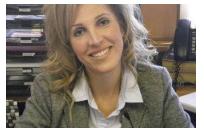 Joanna Pozzulo, Ph.D. Chancellor’s Professor Department of Psychology Director,
Joanna Pozzulo, Ph.D. Chancellor’s Professor Department of Psychology Director,
Mental Health and Well-Being Research and Training Hub (MeWeRTH) Carleton University
E3 ADVOCACY - 36












Seniors Health
In today's society, the health of senior citizens stands as a paramount concern, particularly within the framework of the Canadian healthcare system. This heightened focus is more than just a response to the growing number of seniors. Still, it is deeply rooted in recognizing their invaluable contribution to society and their unique challenges in their twilight years.
As people transition into their senior years, they bring unique health and social needs. This shift presents challenges and opportunities for the Canadian healthcare system and society.
In our Seniors Health section, we will provide information to help you in your journey, navigate daily life as a Senior, and provide resources to help you have the best quality of life.
DownsizingTipsandMaximizingtheValueofYourHome.
By Stéfanie Cadou
As the population ages, there has been an enormous trend in downsizing to smaller homes, condos, or retirement residences. This winter has been particularly tough; many people have decided that enoughisenough.
"It can be challenging to leave the family home where countless memories were created. It's only humannaturetowanttostayaslongaspossible.
However, in the senior transition world, the most popular phrase I hear is, "I should have done this a couple of years ago." Many factors, such as mobility challenges, cognitive concerns, loneliness, safety,security,caregiverstress,orsimplytheburdenofhomeownership,cancomeintoplay.
Forthoseconsideringthistransition,hereareafewtipstohelpyoualongtheway.
DownsizingTips
Start Early: It is never too soon to start removing the unnecessary. We should go through our closets and cupboardstwiceayeartoeradicateaccumulation.
One Room at a Time: Start with the basement or guest room. Proceedingoneroomatatimewillpreventchaos.
The 6-month rule: states that what you haven't used in 6 months is probably unnecessary. Consider extra bedding, cutlery,anddishes.

Quality over quantity: Establish space in your new living quarters and stick to the quality items that mean the most. If you're unsure what to keep, ask for an objective opinionfromsomeoneclosetoyou.
WhereCanItAllGo? Sellwhatcanbesold. Give heirloomstofamilyandfriendsanddonatetocharities. Thelaststepistothrowitout.

MaximizingtheValueofYourHome
Clean: Acleanhousetranslatesintodollars. Beawarethatbuyerstoucheverything!
Neutralize: Neutral colours are very appealing to buyers. Depersonalizing your home allows buyerstovisualizetheirbelongingsinit.Turnyourhomebackintoahouse.LessisMore.
Repair: You do not need to renovate your house to sell it. However, good maintenance is crucial. A leaking roof is problematic and needs to be repaired. A foundation crack must be addressed to prevent deterioration and a lower selling price. Yet, a new kitchen will not guarantee a higher sellingprice.
E3 ADVOCACY - 38
Downsizing Tips and Maximizing the Value of Your Home con`t
Curb Appeal: Mow the lawn and clean the front porch, front door, and windows. Nobody enjoys walking through spider webs before entering a house.
The 5 Senses: Appeal to the five senses of potential buyers:
Smell: Open the windows a few minutes before a showing. Letthefreshairin!
Sight: Open the blinds and curtains, wash the windows, and turn on the lights. We all love a brighthome.
Touch: Clean all surfaces, paying particular attention to countertops, faucets, door handles, andlightswitches.
Hearing: You may want to play soft music during the showing. Regrettably, a hockey game on TV is notrecommended.
Taste:Finally,yourbrokermaybringdrinksand bitesforpotentialbuyersatOpenHouses, addingtothe"WelcometoyourNewHome" experience.





Downsizing can be challenging and emotional. It can be daunting sometimes, but embrace the process as you venture into this new life transition. Speak to friends and loved ones who have already done it. You would be amazed at how many people have a smile on their faces when they talkabouttheirnew"home."
Formoreinformation,pleaseemailusatstefanie.cadou@royallepage.caorcallusat 514-885-3524andaskforStéfanieCadou.

E3 ADVOCACY - 39
Seniors,SexandIntimacy:AVitalConnection.
By MaureenMcGrath RN,NurseContinenceAdvisor&SexualHealthEducator
Intimacy is a fundamental human need that transcends age. For seniors, maintaining emotional and physical intimacy is crucial to their overall well-being and quality of life. Despite societal misconceptions that older adults lose interest in intimate relationships, intimacy remains a significant and fulfilling part of their lives. This essay explores the importance of intimacy among seniors, its benefits and challenges, and ways to support andenhancetheirintimaterelationships.
TheImportanceofEmotionalIntimacy

Emotional intimacy involves the deep connection and bonding between individuals, characterized by mutual understanding, trust, and sharing of feelings. For seniors, emotional intimacy is essential as it provides companionship, reduces feelings of loneliness, and enhances mental health. As people age, they often experience significant life changes such as retirement, the loss of loved ones, and declining health, which can lead to isolation and depression. Having emotionally intimate relationships can buffer against these negative feelings, offering a sense of security and belonging.
Emotional intimacy is not limited to romantic relationships. Friendships and close familial ties also play a critical role in providing emotional support. Seniors with strong emotional connections with others tend to have higher life satisfaction and a better quality of life. These relationships offer a space for seniors to express themselves, share their life experiences, and receive empathy and understanding.
TheRoleofPhysicalIntimacy
Physical intimacy, which includes a range of activities from holding hands and cuddling to sexual intercourse, remains vital for many seniors. The benefits of physical intimacy for older adults are multifaceted. It can enhance physical health by reducing stress, lowering blood pressure, and boosting the immune system. Moreover, physical touch releases oxytocin, often called the "love hormone," whichpromotesfeelingsofhappinessandwell-being.
Sexuality in later life can be a source of joy and vitality. Many seniors continue to enjoy a healthy sexual life well into their later years. However, the dynamics of physical intimacy may change because of aging-related factors such as health conditions, hormonal changes, and the side effects of medications. These changes can affect sexual function, but with open communication and appropriate medical advice, many seniors find ways to adapt and continue to enjoy physical intimacy.

E3 ADVOCACY - 40
Seniors, Sex and Intimacy: A Vital Connection con`t
ChallengestoIntimacyAmongSeniors
Despite the importance of intimacy, seniors face several barriers that can hinder their ability to maintain intimate relationships. Health issues are a primary concern. Chronic conditions such as arthritis, diabetes, and heart disease, as well as cognitive impairments like dementia, can impact both emotional and physical intimacy. Medications used to manage these conditions can also have side effects that affect sexual desire and function.
A multifaceted approach is needed to address these challenges and support and enhance intimacy among seniors. Healthcare providers (HCPs) play a crucial role. HCPs must initiate conversations about sexual health and intimacy during medical appointments, providing a safe space for seniors to express their concerns and seek advice. Regular check-ups should include discussions on how health conditions and medications affect intimate relationships and offer solutions or adjustments where possible.
It is important to address sexual health. Women post-menopause may experience vaginal dryness, painful sex, and, as a result, low sexual desire. They may be uncomfortable discussing it with their partners, spouses, or lovers. These, along with recurrent urinary tract infections, are hallmark signs of a common condition that occurs after menopause called Genitourinary Syndrome of Menopause (GSM). GSM requires treatment in the form of low-dose localized estrogen therapy, which is by prescription only.Itcomesasacream,ring,ortabletandisalifelongtherapy.



It is important to note that whether or not women are sexually active, they may still experience vaginal dryness and require treatment. If a woman is only experiencing vaginal dryness, she may benefit from a hormone-free personal moisturizer, which can be purchased over the counteroronline.
Men may experience erectile dysfunction (ED), which is defined as the inability to attain and maintain an erection adequate for penetrative sex. Men may be embarrassed by this condition and, therefore, may find it embarrassing to discuss it, resulting in the withdrawal of intimacy, especially when the partner is also feeling rejected and confused. It is common to feel embarrassed or apprehensive about discussing erectile dysfunction(ED)withamedicalprofessionalorpartner.
HCPS must ask about whether or not a man is experiencing erectile dysfunction, not only in terms of intimacy but also because ED can be the "canary in the coal mine." Erectile dysfunction may be the first sign of cardiovasculardisease.

E3 ADVOCACY - 41
Seniors, Sex and Intimacy: A Vital Connection con`t
Urinary incontinence is also common as people age. And it's not just women! Men may experience urinary incontinence, too, especially after prostate cancer treatment. Incontinence can affect a person's sexual health as well, as it is embarrassing and isolating and may lead to depression. The critical thing to note is that there are several treatments available, from fluid management to reduction of bladder irritants to bladder retraining, medications, devices, products, and procedures.
Social stigma and cultural attitudes toward senior sexuality further complicate matters. Society often holds misconceptions about older adults being asexual or uninterested in intimacy. These stereotypes can lead to feelings of embarrassment or shame, making seniors reluctant to discuss their intimate needs and concerns openly. Additionally, seniors in long-term care facilities may face policies or environments that do not support or respect their need for privacy and intimate relationships.
Supportingintimacyinseniors
Community support and education are also essential. Senior centers and community programs can provide opportunities for social interaction, helping seniors form new friendships and romantic relationships Support groups for older adults can offer a platform to share experiences andreceiveemotionalsupportfrompeerswhounderstandtheirsituation.
Education about the importance of intimacy and the changes that come with aging can empower seniors and their families. It is important to encourage open communication between partners about their needs, preferences, and any challenges they face. Couples can benefit from counselling or therapy to navigate changes in their relationship dynamics and maintain a healthy andfulfillingintimatelife.
Conclusion
Intimacy is a vital component of life that does not diminish with age. For seniors, maintaining both emotional and physical intimacy is essential for their well-being and happiness. Addressing unique challenges and providing the necessary support and resources can help seniors lead fulfilling lives enriched by meaningful, intimate relationships. By fostering a more inclusive and understanding society, we can ensure that seniors continue to experience the joys and benefits of intimacy throughouttheirlateryears.

Maureen McGrath is an RN, Nurse Continence Advisor, and sexual health educator. She sees patients in her clinic in North Vancouver and online. She hosts a podcast where she discusses all things health. It can be found on Apple Podcasts, Spotify, Google Play, or wherever you listentoyourfavouritepodcasts.
https://podcasts.apple.com/ca/podcast/maureen-mcgraths-healthshow-podcast/id1734045357
Her website is maureenmcgrath.com Maureen did a TEDx talk on the No SexMarriagethathashad35millionviews.
E3 ADVOCACY - 42
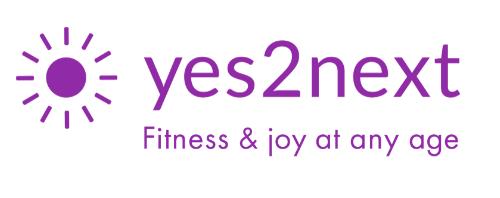
Staying physically active is crucial for seniors to maintain their overall health and quality of life. Engaging in regular fitness activities helps improve strength, flexibility, balance, and cardiovascular health, reducing the risk of injury and chronic diseases. Fortunately, many free workout resources are available, particularly online. One such valuable resource to try is the
YouTube channel https://yes2next.com/
It is a mother-and-daughter dynamic duo showcasing a variety of exercises specifically tailored for those 50 and beyond and for individuals with limited mobility. Their YouTube channel offers you more than 200 free fitness videos.
Whether it's gentle stretches, chair exercises, or low-impact cardio routines, yes2next provides a convenient and effective way for seniors and everyone to stay active and maintain their wellbeing.

E3 ADVOCACY - 43

Pediatric Health
Welcome to the Pediatric Health section of Heal Canada Digital Magazine, a dedicated space where we embrace the journey towards pediatric wellness with open arms and open hearts.
We believe than an informed and engaged parent is an empowered one and through enlighteninig articles, expert insights, and insipiring stories, we aim to equip our readers with the tools and knowledge necessary to navigate the complex landscape of pediatric health care.
Join us as we explore how patient advocacy, active engagement and comprehensive education can transform the experience of peditric health care, turning obstacles into opportunities for growth and healing.
What can be the role of AI in child health?
By Brigitte Leonard, Ph.D
Dear reader, if you live in the northern hemisphere and have healthy children like me, you probably do not think about child mortality, nor do you want to think about it. In developed countries, pregnancy and birth are not associated with death anymore, and this is a good thing. However, there are still some children who won't reach adulthood. Who are they,andwhatcanwedotochangetheirfate?
In developed countries, the critical current health issues in pediatrics include mental health, rare genetic disorders, cancer, and preventable diseases.

Mentalhealth problems
They are common among children and youth. Seventy percent of persons living with a mental illness see their symptoms begin before age 18. Early identification of mental health problems and timely intervention are incrediblycriticalandcanhelptobuildabettersociety.


Pediatriccancers
They affect more than 400000 worldwide each year. The most common types of cancer are leukemia, lymphoma and solid cancers such as brain cancer, neuroblastoma and Wilms tumours. The survival rate can reach 80%. A better comprehension of molecular drivers and improved access to targetedtherapiescanhelpgettheperfectscore.
Raregeneticdisorders
They are responsible for 35% of deaths in the first year of life, and one-third of children born with a rare disease will not live to see their fifth birthday. The medical community thinks that the contribution of rare disorders to child mortality is probably higher because of underdiagnosis due to the lack ofcomprehensivegenetictesting.
Preventablediseases
Vaccinations have had a profound impact on reducing child mortality rates worldwide. From the 40% to 50% mortality rate observed at the end of the 1700s, we currently observe between 0.38% and 0.53% mortality rates by birth in Canada and the USA, respectively. Of course, this rate varies significantly based on socioeconomic status, healthcare access and public healthinitiatives.
E3 ADVOCACY - 45
This reduction was due to vaccination, especially against diseases like measles. Measles is highly contagious, and in a classroom of children who are not protected against measles, a child with measles will infect 12-18 others. Measles is associated with several severe health consequences, including hospitalization, pneumonia, encephalitis, and death. Measles can also cause "immune amnesia," making individuals more susceptible to pathogens they had previously developed protectionagainst.
The resurgence of contagious diseases in developed countries has become a significant issue. The Centers for Disease Control and Prevention issued a health alert warning of a global rise in measles cases The key issue driving this resurgence is under-vaccination. To protect a community from outbreaks, about 95% of the population needs to have been vaccinated. The anti-vaccination movement is increasing in the population, combined with the return of internationaltravel,creatingtheperfectstorm.
AI can significantly reduce child mortality at three levels: in the clinic, in the laboratory, and in social health issues. Daily, AI can support better healthcare professionals by improving early disease screening, diagnosis, and resource allocation. In drug development research, AI can speed up the comprehension of the molecular drivers of cancer and genetic diseases and help select molecules capable of correcting abnormalities. It can also help predict outbreaks and supportpolicydevelopmenttosupporthealthauthorities.
Areyoureadyforthisrevolution?

E3 ADVOCACY - 46
Have your voice heard! Visit the My Blood My Health website and participate in our Quality of Life Survey mybloodmyhealth.ca What can be the role of AI in child health?

E3 ADVOCACY - 47

*
Allinformationbas don2023data
Advocacy Spotlight

The "Advocacy Spotlight" section of Heal Canada Digital Magazine servesasadynamicplatformdedicatedtoshiningalightonpatient advocacy groups, both new and established. This unique feature aims to introduce these vital organizations to a broader audience, highlighting their missions, achievements, and the critical support theyofferpatientsandtheirfamilies.
Eacheditionofthissegmentmeticulouslyselectsadifferentgroup, delvingintotheirspecificfocusareas,rangingfromrarediseasesto everyday health challenges. By showcasing their stories, initiatives, and community resources, Heal Canada amplifies these groups’ voices and fosters a deeper understanding and connection within thebroaderhealthcarecommunity.
This section is more than just an informational piece; it's a celebration of the tireless efforts and significant impact of these advocacy groups & empowering readers by connecting them with valuableresourcesandsupportnetworks.

Melanoma Awareness Month at the GCI: Myths, Facts, and New Research.
By Diana Berry

Melanoma is the rarest, but also the deadliest form of skin cancer, and is the source of both common misconceptions as well as next-generation cancer research. Unlike other skin cancers which arise from the cells that make up the layers of the skin, melanoma originates in the skin’s pigment producing cells called melanocytes. Many researchers at the Rosalind and Morris GoodmanCancerInstitute(GCI)areinvestigatingwhatcausesmelanomatodevelopandspread, withtheultimategoalofimprovingtreatmentsforpatients.
Melanomaisoftenassociatedwithtanningandlackofsunscreenuse,sincemelanomaandother skin cancers are driven by damage to cells caused by sunburn. Another melanoma risk factor is biological sex – males are more likely to be diagnosed with melanoma, and more likely to die of melanoma While outdated misconceptions explained this sex difference in melanoma by conflating gender stereotypes with sunscreen use, researchers including Ian Watson at the GCI have uncovered a genetic explanation A gene on the X chromosome, which females have two copiesof,isprotectiveagainstmelanoma MaleshaveonlyoneXchromosome,sotheyhaveless geneticprotectionagainstmelanoma
E3 ADVOCACY - 51
Melanoma Awareness Month at the GCI: Myths, Facts, and New Research
A particularly dangerous myth about melanoma is that it is easy to treat by surgical removal of the affected skin. While early detection of melanoma is important for surgical treatment options, melanomas detected later have often spread to other areas of the body and become very difficult to treat. Melanoma is particularly aggressive in spreading or metastasizing to the brain. In a study from the GCI, researchers Logan Walsh, Daniela Quail, and Peter Siegel investigated the immune cells within tumours that had originated in the brain or spread there from other tumour types, including melanoma. They found striking differences between the groups, which could inform doctors how to use the best immunotherapy drugs - therapies that use a patient’s immunesystemtotargetcancercellsandcaneffectivelytreatmelanoma.
In addition to promising immune-based therapies for melanoma, melanoma is a success story for next-generation cancer therapies which target a specific cancer-causing mutation. About 50% of melanomas are driven by the same mutation, which can be specifically targeted by drugs that inhibit the mutation harbouring cancer cells while sparing healthy cells. Pioneering research at the GCI led by April Rose, Peter Siegel, and Ian Watson found that these same drugs can target different melanoma mutations, expanding the number of patients who can benefit from existing therapies. Ongoing work at the GCI aims to find new uses for existing therapies and targets for melanomatreatment.
While significant progress has been made in the treatment of melanoma, it remains a formidable disease that requires proactive measures for prevention. The dedicated researchers at the GCI are not resting on their laurels. They are diligently building on their findings to provide doctors with more comprehensive guidance on melanoma treatment, with the ultimate goal of improving outcomes for patients The studies highlighted in this article, which can be found below, are a testamenttotheirunwaveringcommitmenttoadvancingmelanomaresearch.
Alkallas, R., Lajoie, M., Moldoveanu, D… & Watson, I.R. Multi-omic analysis reveals significantly mutated genes and DDX3X as a sex-specific tumor suppressor in cutaneous melanoma. Nat Cancer(2020). https://doi.org/10.1038/s43018-020-0077-8
Karimi, E., Yu, M.W., Maritan, S.M… & Siegel, P.M., Quail, D.F., Walsh, L.A. Single-cell spatial immune landscapes of primary and metastatic brain tumours. Nature (2023). https://doi.org/10.1038/s41586-022-05680-3
Dankner, M., Lajoie, M., Moldoveanu, D… & Watson, I.R., Siegel, P.M., Rose, A.A.N. Dual MAPK inhibition is an effective therapeutic strategy for a subset of class II BRAF mutant melanomas. ClinicalCancerResearch(2018). https://doi.org/10.1158/1078-0432.CCR-17-3384
We want to sincerely thank Diana Berry, author of this article, and the Rosalind and Morris Goodman Cancer Institute at McGill University for allowing us to reprint it. Your generosity and supportaregreatlyvalued. awareness-month-at-the-gci-myths-facts-and-new-research
E3 ADVOCACY - 52

Driving
Change: Melanoma Canada's Mole Mobile Expands to Quebec and B.C. in 2024 Program.
Toronto,ON–May16,2024 – MelanomaCanada,aleading not-for-profitorganizationdedicated toskincancerawareness,prevention,andsupport,isthrilledtoannouncetheexpansionof its acclaimedMoleMobileprogram,presentedby national sponsorNeutrogena®,aKenvuebrand Afterasuccessful touracrossOntarioin2023,newMoleMobileswill journey toQuebecand BritishColumbiain2024,bringing vital skincancereducationandearly detectionservicesto communitiesacrosstheseprovinces.
Skincancer,including melanoma,continuestobeasignificantpublichealthconcerninCanada, withratesof diagnosisontherise.Many Canadiansstruggletoaccessourstrainedhealthcare system,especially inremoteandunderservedcommunities.MelanomaCanadarecognizesthe needtoincreaseawarenessandaccessibility topreventivemeasuresandearly detection services.
TheMoleMobile isaground-breaking initiativethatunderscorestheimportanceof skincancer preventionandearly detection.It'snotjustabouteducationbutaboutempowering individuals withtheknowledgeandtoolstoidentify potential skincancerrisksearly whentreatmentismost effective.TheMoleMobileisdesignedtobeversatile,visiting high-profileeventsandremote, indigenous,andunderservedcommunitiesthroughoutQuebecandBritishColumbia,ensuring thatnooneisleftbehindinthefightagainstskincancer.
"Expanding theMoleMobileprogram toQuebecandBritishColumbiaalignswithourmissionto reachasmany Canadiansaspossiblewithlife-saving informationandservices,"saidFalynKatz, CEOof MelanomaCanada."Weunderstandindividuals’ challengesinaccessing healthcare services,particularly inremoteandunderservedareas.TheMoleMobileallowsustobridgethis gap,offering education,awareness,andsupportwhereneededmost."
ForQuebecandBritishColumbia,theMoleMobilewill beshifting itsfocussquarely on awarenessandeducation.Thismeansthatinsteadof providing on-sitescreening services,each MoleMobilewill bestaffedby nurseswhoareequippedwithvalidatedrisk assessmenttools. Thesenurseswill provideone-on-oneconsultationstoassesseachindividual'srisk levelsforskin cancerandeducatethem onhowtorecognizesignsof potential skincancer,ensuring thatthe publiciswell-informedabouttheservicesbeing provided.
"Preventionandearlydetectionarekeyinthefightagainstskincancer,"saidDr.JuliaCarroll, DermatologistandBoardMemberatMelanomaCanada."TheMoleMobilenotonlyraises awarenessbutalsoprovidesindividualswiththeopportunitytotakeproactivestepsin safeguardingtheirskinhealth.ByreachingcommunitiesacrossQuebecandBritishColumbia, wehopetomakeameaningfulimpactinreducingtheburdenofskincancerinCanada."
E3 ADVOCACY - 53
Driving Change: Melanoma Canada's Mole Mobile Expands con't
Inadditiontooffering educationandrisk assessmentservices,theMoleMobilewill serveasa platform foradvocacy,encouraging policymakerstoprioritizeskincancerpreventionandaccess tohealthcareservices.By engaging withcommunitiesandstakeholders,MelanomaCanadaaims todrivepositivechangeandimproveoutcomesforindividualsaffectedby skincancer.
Theexpansionof theMoleMobileprogram toQuebecandBritishColumbiarepresentsa significantmilestoneinMelanomaCanada'songoing effortstocombatskincancerandsavelives. MelanomaCanadaremainscommittedtopromoting skincancerawareness,prevention,and supportnationwidethroughinnovation,collaboration,anddedication
The2024 MoleMobiletourisatestamenttotheincrediblesupportof ourpartnersandsponsors. Wearedeeply grateful toourpresenting national sponsor,Neutrogena®,andournational sponsors,JamiesonWellness,Pfizer,Sanofi,TD Bank Group,Charles,EvelyneandSandra Dolanksy Foundation,andNissan.
Ourlocal partners,including LondonDrugs,theDrivefortheCureFoundation,theJess&Red HamiltonFundinBC,JeanCoutu,Olymbec,andtheJarislowsky FoundationinQuebec,have madethistourpossible.TheMoleMobileswill stop atNissanDealerships,JeanCoutu,Giant Tigers,andLondonDrugsStoresacrosstheprovinces,demonstrating thecollectiveeffortand sharedresponsibility inthefightagainstskincancer.
AboutMelanomaCanada: MelanomaCanadaadvocatesforandsupportsCanadiansliving withmelanomaandskincancer by providing helpful resources,education,psychosocial supportservices,andmore.Formore informationaboutMelanomaCanadaandtheMoleMobileprogram,pleasevisitmelanomacanada ca
MelanomaandSkinCancerStatsandFacts:
SkincancerisapervasivehealthconcerninCanada,withapproximately 1in3cancersdiagnosed asskincancer.Annually,anestimated90,000skincancersarediagnosedinCanada,highlighting thesignificantburdenof thediseaseonindividualsandcommunities.
Melanomaisamong thefewcancersexperiencing rising incidenceandmortality rates,signalling thecritical needforcontinuedeffortsinpreventionandintervention.Tragically,3Canadians losetheirlivestomelanomaevery day,emphasizing theimportanceof early detectionand accesstoeffectivetreatment.
FormoreinformationvisitMolemobile
Formediainquiries,pleasecontact:LorraineQuartaro Lorraine@thePRQ.com(416)433-7232

E3 ADVOCACY - 54
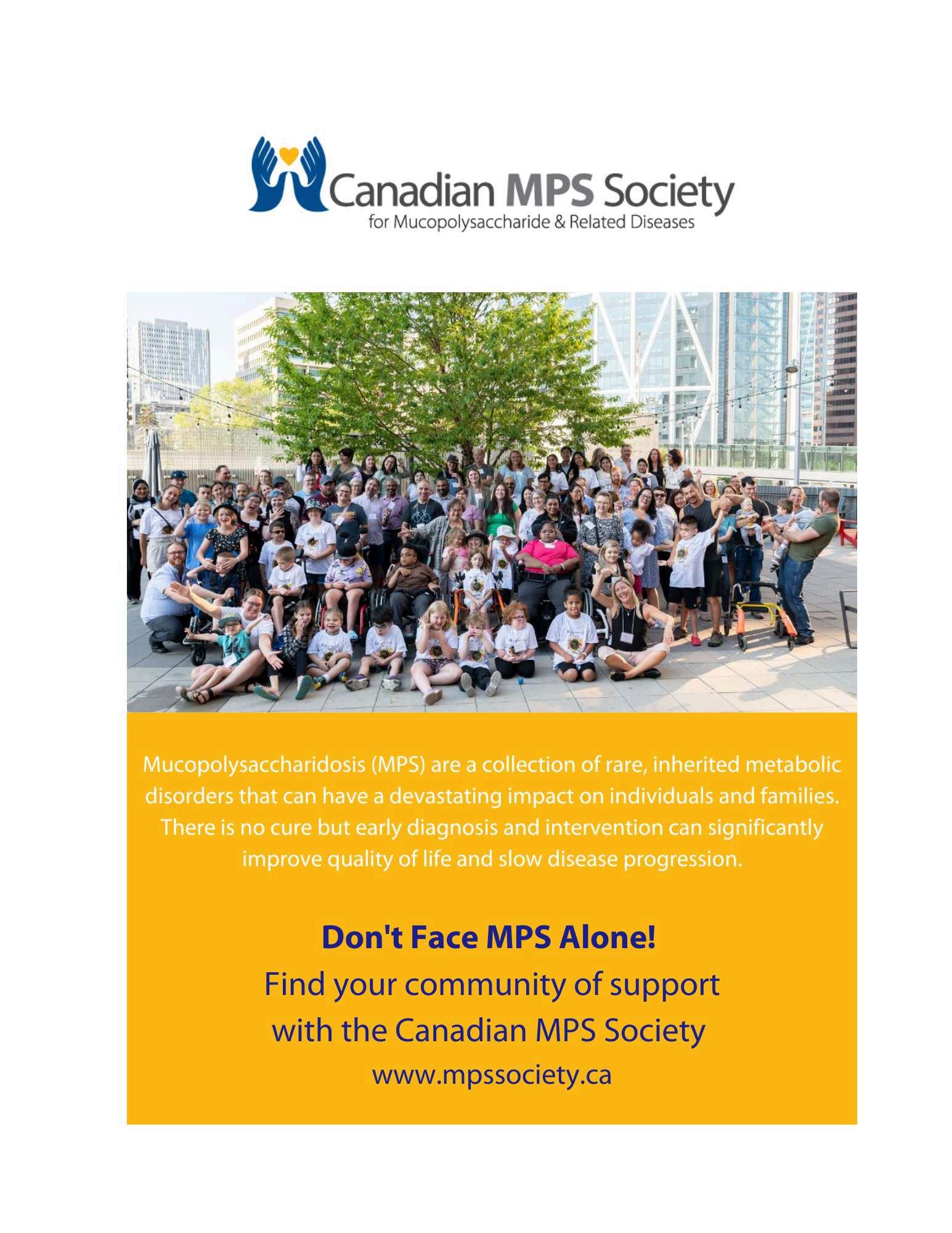
E3 ADVOCACY - 55

Patient Journey's
The "Patient Journey’s" section of Heal Canada Digital Magazine is close to our heart. This magazine is dedicated to patients and caregivers. We are proud to offer a platform to our community so that we can share, learn and grown together. Here they can share their experience and empower readers by connecting their experience with our Heal Canada community, so that we understand whatever the situation is that we are faced with, we are not alone! United we stand in Advocacy!
Diagnosedwithararebloodcancer–myjourneysofar.
ByWendyReichental
I will never forget the day I anxiously waited in the hematology/oncology waiting room, my heart pounding as I contemplated what lay ahead. My family doctor referred me here following routine blood tests as part of my yearly physical. Further blood work indicated that I tested positive for a particular gene mutation and that I have a myeloproliferative neoplasm (MPN), which stands for a group of rare blood cancers typically characterized by the overproduction of blood cells in the bonemarrow.
One of the million things running through my freaked-out mind aside from the immediate thought of, "Am I going to die?" was, "How did I get this MPN?" The jury is out on what causes an MPN; some scientific documents point to some environmental impact or long-term noxious exposure. I wondered if my mom's treasured but highly corroded aluminum pots, in which she so lovingly cooked many stews and chicken soups, could have delivered something more than comfort.
I received no real answers because the causes of an MPN diagnosis remain elusive. MPNs typically tend to be an older person's condition (sadly true in my case, as I was just about to turn 60), although they can occur in younger adults. I have an MPN known as polycythemia vera (PV), whichresultsinelevatedredcellmass.
As I sat in the chair in shock, I felt even more dismayed when my doctor rattled off several questions concerning any strange and unusual symptoms I might be experiencing. For instance, do I have any intense itchy skin following my shower? What about visual disturbances, fatigue, shortness of breath, headaches or sweating, especially at night? Well, I can tell you I was undoubtedlyprofuselysweatingnow!
My doctor saw my anxious reaction as he provided more details about my diagnosis and tried to assuage my fears by telling me that the 1970s hit tear-jerker movie Love Story, with Ryan O'Neil and where the main character, famously played by Ali McGraw, tragically dies of an undisclosed terminal blood disease, gave all blood cancers a scary, fatal prospect and consequently a bad rap.
This anecdote did nothing by the way to soften the blow. I was still in panic mode, but I appreciated the doctor's message that blood-related cancers have come a very long way since thenandaresignificantlymoresurvivabletoday.
While my doctor tried to assure me that it was possible to live an expected lifespan, he was also blunt, telling me there are no cures or remission with an MPN. There is also the risk that an MPN diagnosis might progress to other cancers, particularly acute myeloid leukemia. Unfortunately, doctors do not know why MPNs transition into something more severe in some patients than in others.
Treatment options depend on your specific MPN and the severity of the symptoms. I now have a different doctor at another hospital where I am more closely monitored and have blood tests doneeverythreemonthsalongwithultrasoundstocheckonmyorgans,specificallymyspleen
E3 ADVOCACY - 57
which could be most impacted by this type of cancer. My current cocktail, which is unfortunately not served in a tall glass, consists of low-dose aspirin and a tolerated, but not without its drawbacks,chemotherapydrugtoreducecellgrowthrate.
As I absorb all the data on MPNs, I hope my story reminds everyone, especially women of a certain age, to prioritize their well-being and insist on annual check-ups, particularly getting their blood work done, which can identify and treat health issues before they worsen. I am extremely grateful to my family doctor who noticed something unusual in my blood work and referred me promptly toahematologist.MyPVdiagnosiswasthankfullycaughtearly.
In the meantime, I hope we continue to advocate for better recognition of these rare conditions and diseases and keep working together, pushing for easier access to a family physician, equitable healthcareservices,morediagnostictools,clinicaltrials,andongoingvitalresearch.
A global effort to expedite rare disease treatments and, ultimately, to one day find more cures is thekindofnonfictionmovieandhappyendingwecouldalldelightin!
Be sure to check out Heal Canada's newly launched digital magazine My Blood My Health, which covershematologicalissues,includingmalignanciesandotherhematologicaldisorders.

E3 ADVOCACY - 58
mybloodmyhealth.ca My Blood, My Health encourages peoples to get their blood checked yearly Diagnosed with a rare blood cancer–my journey so far con`t
Listen, It’s My Heart.
by Christina Stuwe
I've advocated for women's heart health for six years. Why? There aretwosignificantreasonsforthis.
First, "heart disease and stroke are the main causes of premature death in Canadian women." That means that "every 16 minutes, a woman in Canada is dying from heart disease or stroke."
Ms.Understoodbrochure:HeartandStroke2018
Secondly, I had a close call that almost made me a part of that statistic.

You see, I had a heart attack at age 44 but did not recognize the signs and only became aware of it three years later, during one of three ECGs I had. It was finally confirmed later that year with an angiogram. Had I been aware of the typical heart attack symptoms for women, I would have acted on them immediately. Some of my symptoms were nausea, heavy fatigue, sweating, and breathlessness, and I thought it was all because I carried a heavy item to our car on a hot summer day.
I also had pregnancy complications, which I later found out were warnings of an increased chance for future heart disease—a fact I was never informed of. "Nearly a third of young women with premature acute heart attacks have a history of pregnancy disorders. Gestational diabetes, hypertension, or pre-eclampsia doubles a woman's lifetime risk for heart disease." (Ms. Understoodbrochure:HeartandStroke2018)
My journey toward advocacy started with me listening to my body. I listened to my heart racing like a freight train in my chest while watching cartoons with my son on February 18, 2017. I listened because I had lost a mentor, my son's godfather, and my mom to heart disease. My husband took me to the nearest walk-in clinic that day, and we began my journey of many steps tothetruthtogether.
Over seven months, we listened, asked questions and had ECGs identify abnormal heartbeats. We listened and questioned my results and my cardiologist's, and when it felt like we were not being heard, we pushed for answers and further tests. An added benefit was having the support and voice of my husband on these appointments, who, when I felt emotionally overwhelmed, was theretocontinuequestioningthedoctorandhelpmeprocesstheinformationweweregiven.
I listened to Dr. Kealy and her team when they performed my angiogram. We listened as a family when the hard truth of my diagnosis was finally revealed to us. My heart had received minimal damage from my heart attack three years prior. Thank goodness for small blessings. My heart, however, had three major arteries that were blocked between 70 and 100%. We were shocked. This meant that I required open heart surgery, a triple bypass, at 47. The trouble was that there were many people ahead of me who needed cardiac surgery, which meant I would have a prolongedfour-and-a-half-monthwaitbeforeitwasmyturn.
E3 ADVOCACY - 59
Listen, It’s My Heart con`t
Six days after my angiogram, Dr. Teresa Kieser's office contacted my husband and me. She would be my amazing cardiac surgeon. My consultation was booked for February 14, 2018, Valentine'sDay.Howcosmictoreceiveamessagelikethat;youbetIwaslistening!
Having extensive surgical experience, Dr. Kieser assured me of a successful procedure and a promising prognosis for a long and healthy life, citing a 98% chance of success. So, long story short, I am here thriving and advocating for women's heart health because I listened to my body and trusted my intuition. This quest for listening drove me to write a book about my journey, to hopefullyhaveotherwomen"listen"totheirbodiesandstandupandadvocateforthem.
My book, "Yes, It's My Heart... Is It Yours Too?" summarizes my journey, lessons learned, struggles,andrealizationsaboutmyheartanditsvoice.Iencourageyouto"listen"aswell. As I wrote in my book, "May you listen to your own inner heart, face the fears, face the challenges, and do what you need to do. Yes, it won't be easy. It will be messy, and it will take hardwork!Willitbeworthit?Embracethejourney,andyouwillanswerthatforyourself." If you're interested in reading more about my experiences, the things I discovered, and the helpfuladviceandtipsIlearnedonthisjourney,grabacopyofmybookonAmazon.
ChristinaStuwewasraisedinCalgaryandis marriedwithason.She’sworkedinthefinancial industryforoverthreedecades,helpingfamilies financially.Currently,sheisusingher publicspeakingexperienceandpeopleskillsto passonhermessage.Asawomanwithlived experience,shesharesherknowledge withvariousheartstudies.Christinahasalsobeen featuredonGlobalandCTVNews,theSunday NightHealthShowpodcastandonline.She’salsoa memberoftheCanadianWomen’sHeartHealth Alliance,aformerspokespersonforHeart&Stroke andisnowtheauthorofherfirstbook.
ContactInfo:
Email: christinastuwesheart@gmail.com
Instagram:@christinastuwesheart
Facebook:ChristinaStuwe
X(formerlyTwitter):@christinastuwe


E3 ADVOCACY - 60


Share your Patient Journey Story with us!
HE3 ADVOCACY - 61
If you would like to share your story about your journey, as a patient, caregiver, or advocate, send us a short (150 words) description of your journey, for consideration in an upcoming issue! email your submission to: digitalmagazine@healcanada.org



Living Well
In this vibrant corner of Heal Canada Digital Magazine, we're excited to introduce you to our "Living Well" section – a treasure trove of inspiration and guidance for those seeking a healthier, happier, and more balanced life. Our mission is to empower you with expert insights, the latest health trends, and personal wellness stories that resonate withreal-lifechallengesandtriumphs.
Here, we explore the many facets of well-being: from nourishing your body with wholesome nutrition to rejuvenating your mind through meditation and mindfulness. You'll find practical advice on exercise, mental health, and preventive care, all tailored to fit into your busy lifestyle.
But "Living Well" is more than just a guide; it's a community. We encourage you to engage with us, share your journeys, and learn from others who are on similar paths. Whether you're taking the first steps towards a healthier you or are further along your journey, we're here to supportandinspireyouateveryturn.
Living Well will provide topics that matter the most to your health and happiness.Let'scelebratethejoyoflivingwelltogether!
Cardiologists secrets for a healthy heart.
by Brigitte Léonard, Ph.D
Almost all advice on reducing cardiovascular risk includes diet, weight loss, exercise programs, and stress reduction recommendations. When we asked eighty cardiologists what they do for their cardiovascular health, their answers fell mainly into these categories. No surprise here. These basic principles for a better life may seem easy, but why is it so challenging to integrate them into our busy lives? Let's explore their vision and how to incorporate these vital elements into our lives for a healthier heart.
Smoking
It's encouraging to see that only one doctor mentioned tobacco, supposing a decline in this harmful habit. Not smoking, exercising regularly, and maintaining a balanced diet can collectively reduce the risk of heart attack by a staggering 86%. This significant risk reduction underscores our lifestyle choices' profound impact on heart health.
Testing, Monitoring and follow up
While adopting a healthy lifestyle is always beneficial, it's crucial to remember that everyone has unique genetic risks for heart disease. Understanding your family history, assessing your risks with a professional, and taking appropriate steps to manage them can significantly improve your heart health.
This knowledge empowers you to take control of your health. It makes you more informed and responsible in decision-making about heart health because sometimes a healthy lifestyle is not enough.
"I see my doctor.", "I check my blood pressure and sugar."
"I don't smoke"
"I know my risks, my heredity."
"I have my heart checked regularly."
"I take a statin because of my high cholesterol."
People with a healthy weight might be less susceptible to being screened for blood pressure, cholesterol, and blood sugar. Most of these risk factors are not associated with specific symptoms. Some cardiologists stressed the importance of monitoring these factors regularly.
"I pay attention to female risks, and monitor my hormone levels."
There are particular risks to women related to reproductive hormones and certain diseases more common in women. In addition, menopause deprives women of the beneficial effects of estrogen on blood vessels - including lower cholesterol levels. If you are perimenopause, it is essential to talk to your doctor about these risk factors.

E3 ADVOCACY - 63
Cardiologists secrets for a healthy heart, con`t
PhysicalActivities
Guidelines target 150 minutes of cardiovascular activities weekly because they reduce blood pressure, increase good cholesterol (HDL), lower bad cholesterol (LDL) and triglycerides,andstabilizebloodsugarlevels.
In addition, regular exercise has proven to be a fantastic stress management strategy. It reduces spikes in cortisol, the hormone associated with stress, which is associated withanincreasedriskofheartattackorstroke.
Time and motivation are the most significant limitations to maintainingasufficientactivitylevelinadulthood.
Time

We have to reprioritize exercise in our lives. We can schedule exercise sessions in our calendars just like we write down a businessmeeting.
Toadoptandmaintainaproperlevelofexercise,weneedtomake it as easy as possible. Integrating exercise into daily activities is oneofthebestwaystoreachthetargetactivitylevelassociated withbetterhealth.Everylittleeffortcounts.
Takethestairs
Parkacertaindistancefromyourdestination
Standasoftenaspossible
ExerciseinfrontoftheTV
Breakdownexerciseintoten-minuteblocks
Motivation
The less the exercise weighs on us, the better our chances of doing it. Motivation is essential to staying active.
Pleasureisdefinitivelyanessentialfactor.
Partners: Wearesocialbeasts;partnerswithtwoor fourlegscanhelpusachieveourobjectivesevenon rainydays.
Measurescanmotivate:apersonisconsideredactive with10000dailysteps.
Timing: Sticking to the training routine is easier if planned in the morning because motivation fades withtheenergyduringtheday.
"I plan my training sessions in my schedule."
"I go to work by bike."

"I have sex often."
"I adopted a dog." "I recruit partners to motivate me."
"I wear a pedometer."
"I
train in the morning."
E3 ADVOCACY - 64
Cardiologists secrets for a healthy heart, con`t
HealthyEating
A 2016 study found that being overweight could take away one to threeyearsoflifeexpectancy,whileobesitycouldtakeawayupto eight.Theeffectiseventhreetimesworseformenthanforwomen.
OK, what are we supposed to do with this statement? We do not know what is good for us anymore. Should we avoid fat or sugar? Should we eat more meat because protein is good now? What a nightmare! Twenty-eight of the cardiologist's responses were relatedtoeatinghabits.Youwillfindasummaryoftheirprioritiesin thefollowingtable.

"I count calories.", "I weigh myself every day."
Reaching and maintaining a healthy weight is work for everyone, evencardiologists.Hereiswhattheydotoavoidgainingweightover time.
Drinking water reduces calorie intake during the day and avoids dehydration, which increases blood viscosity and can damage organs.
Evendoctorscanlearnvaluabletipsfromnutritionists.
Below,wecanseesomeoftheirtrickstoavoidhungeranditsbest friend:poorjudgment.
"Ineverskip breakfast."
"I eat raw fruit and vegetables while preparing the meal" "I have healthy meals delivered, or I prepare my meals for the week."
Some cardiologists follow specific diets or focus on foods they privilege or avoid. Clear, simple trends establish themselves when you review their comments. They avoid highly transformed food rich in transformed sugar (high fructose corn syrup) and trans fat. They also avoid processed meat (sausages, deli) and red meat. There is a clear link between transformed food and red meat and cardiovascular diseases.
We better understand now how different cooking oils affect our heart health. Avoid products with palm oil and instead look for those with canola oil. Olive, Grapeseed, coconut, avocado, and almond oils are also good choices. Frying food is terrible for our health because reusedcookingoilturnsintotransfats,whichclogthearteries.
The Mediterranean, no-white, and vegetarian diets have some common ground. They all recommend eating vegetables, fruit, wholegraincerealproducts,andleanproteinsources.

"I drink a ton of water."
"I took a course on nutrition."
"I follow the Mediterranean diet" "I eat a 'no white' diet" "I tried a vegetarian diet"
The serie of "I avoid "... simple sugars, saturated fats,salty foods. " "I skip hot dog meals"
"I avoid frying." "I choose my cooking oils carefully."
E3 ADVOCACY - 65
Cardiologists secrets for a healthy heart, con`t
Fruits and whole grain products should be the preferred source of sugar. They contain more fibres than white and transformed products. Soluble fibre protects the heart by absorbing lowdensity lipoproteins – the 'bad' cholesterol – and facilitating their excretion. Berries contain natural antioxidants (like vitamins C and E) and anthocyanins (the pigments that give colour)thathelptheheart.
Leanproteincanbechicken,fish,legumes,andeveneggs.Recent studies have shown that a cholesterol-free diet does not necessarily lower a person's cholesterol levels. When the cholesterollevelinafoodishigh,itoftenactsasanantioxidant. Eggsaregreatfoods,withsaturatingproteinsandessentialfats.
Andwhataboutpleasure?Weallhaveonelife,afterall.Dowehave toeliminatechocolate,wine,andfriesfromourlives?No,notatall. Basedoncardiologists'wisdom,thetrickistodrinkmoderately,eat gooddarkchocolate,andeatlessgreasyfriescookedwitholiveoil intheoven.
Supplementsandotherhealthyhabits
"I don't buy fruit juice"
"I read labels carefully"
The serie of "I eat" ... berries every day, a lot of protein, eggs, dark chocolate.
"I make myself less greasy fries in the oven"
A study showed that women who took a multivitamin for more than three years significantly reducedtheirriskofheartdiseaseanddeathfromsuchdisease.
Certain types of probiotics have been shown to significantly decrease bad cholesterol and inflammatory markers that can leadtoheartdisease.
It has recently been proven that the flu vaccine offers protectionagainsttheonsetofatrialfibrillation.
Enough magnesium level in our body reduces the risk of excesscholesterolproduction.
RecentstudiesindicatethatvitaminK2isessentialforheart health. It works by circulating calcium through your bones instead of letting it clog your arteries. Some studies suggest that vitamin K2 can reverse coronary calcification, a disease thatcausesablockageinyourarteries.
Vitamin D deficiency is widespread, and studies have demonstrated that low vitamin D levels are significant predictors of high blood pressure and blood sugar levels, cardiacdeath,heartattacksandstrokes.

"I take a good multivitamin."
"I take vitamin D and K2 supplement."
"I get vaccinated against the flu every year" "I take probiotics."
"I mix magnesium powder in my water"
E3 ADVOCACY - 66
Cardiologists secrets for a healthy heart, con`t
Relaxationandsociallife
The quality and quantity of our social relationships are intimately linked to our overall health and a lower risk of death. Forget about work occasionally and focus on your loved ones instead, whichwillhelpimproveyourcardiovascularhealth.
Unpleasant conversations raise heart rate and blood pressure, and stress increases the secretion of hormones (cortisol, norepinephrine, catecholamine, and adrenaline) that damage the cardiovascular system. Small things such as a good laugh can reduce stress, dilate the arteries, and reduce blood pressure. So, reducing stress in our lives is vital.Itisuptoyoutofindwhatisworkingforyou.
"I take time with my friends and family." "I keep toxic person at bay"
"I practice yoga" "I meditate"
"I read to relax"
The World Health Organization has even shown that small green spaces incitiesaregoodforcardiovascularhealth,loweringmortalityrates.
Studies have shown that expressing gratitude impacts our heart health by increasing heart rate variability and lowering levels of inflammatory biomarkers.Itisagoodexerciseforthesoulandthebody.
Sleep
"I spend time in the park" "I go hiking."
"I keep a diary of gratitude"
People today sleep up to two hours less per night than 100 years ago. This decreased sleep is associatedwithhigherbloodpressureandincreasedriskofheartdisease.
Agoodsleephygieneis:
·Noscreensinourroom.
·Nocaffeineintheevening.
·Limitingalcoholconsumption.
Relaxation activities before sleeping like herbal tea, gazing at the stars,andreading
In case of insomnia, we can take a small dose of melatonin and 5HTPsupplementstohelpusfallasleepandsleepthroughthenight.
Sleep apnea, one of the most common sleep disorders, causes you to take long breathing pauses while sleeping. Long breathing pauses can deprive your organs of oxygen and wreak havoc on your heart health, such as heart attacks, arrhythmias, heart failure, strokes and highbloodpressure.
"I sleep 8 hours a night, every night"
"I have good sleep hygiene."
"I take an herbal sleeping pill."
"I did tests to detect sleep disorders."
E3 ADVOCACY - 67
Satisfy Your Sweet Tooth: Combat Your Cravings:
Are you ready for this shocking fact?
by Sue Lemoine, RHNP
The average North American, according to recent research, consumesroughly150poundsofsugarayear.
What!!?? That sounds like A LOT and to me that is shocking. Hopefullyitistoyouaswell.
When you consider that as a fact, it’s not difficult to guess why we, as a nation, struggle with obesity and diabetes. Mildly overweight people usually store about 5% of the sugar they eat for energy. They metabolize about 60% and they store the rest, about 35%, as fat for future energy needs. The problem is that we rarely need to tap into those fat stores so they just keep accumulating.

Our“SweetTooth”iskillingus.
What we whimsically call a “sweet tooth” is really just a cute name for a sugar craving, or a passion for sweet foods. If you’re the person most likely to hit the dessert bar twice, you probablyidentifyassomeonewitha“sweettooth.”Andthatmightnotbeentirelyyourfault.
Recent evidence suggests a genetic root to the lust for sugar. PLUS research proves that “Sugar Addiction” is as real as drug addiction and probably harder to beat. Hardcore metabolic roots for those sugary cravings mean that sugar junkies who really want to combat their desires need tofindhealthyalternativestosatisfytheirsweetteeth.
Whatarethegeneticcausesforasweettooth?
Studies in recent years show that people who crave sugar tend to have a “weak sweet taste.” That means that they need more sugar than a normal person to taste the same level of sweetness. Genetics appear to account for about 30% of the differences in peoples’ ability to taste sweetness according to a study of identical and non-identical twins at the Monell ChemicalSensesCenter.
The same research demonstrated that contrary to popular thought, eating a lot of sugar as a kid didn’t anesthetize participants to sweetness. It’s a genetic thing. Some people are just born with asweettooth.
So what happens when DNA supplies you with weak sweet receptors? Sweets are more appealing to you than to most people. You eat more sugar to satisfy your desire for sweetness. And that means you take in more empty calories that your body will helpfully store as fat in caseyouneedthatenergylater.Thanks.
Whatissugaraddiction?
Sugar over stimulates the reward centers in your brain and according to some experts, causes addiction. Other experts dispute whether sugar addiction exists, but what I know is when I eat sugar I want more and more and more. So regardless of what the experts say, I feel like it's an uncontrollablemonsterwithinme.
E3 ADVOCACY - 68
Satisfy Your Sweet Tooth con`t
Here's what we all agree on ... foods with a lot of sugar cause our brains to release massive amounts of dopamine, the same brain chemical that illicit drugs, like cocaine and meth, amp up to create euphoria. That’s what we mean by a“sugarhigh.”
When we eat a lot of high-sugar foods frequently, we train the brain to be less conscious of the increased dopamine levels. And once the brain is less receptive it takes more and more sugar to create the same feeling, just like building a tolerance to an addictive drug. Because sugar manipulates our brains’ reward centers, and functions a lot like nicotine or cocaine, folks with a predisposition toward addiction are more likely to get addicted to sugar and to lose control of their ability to regulate consumption.

Well that sucks. But I have good news! You CAN satisfy your sweet tooth and put the kibosh on those crazy cravings by choosing healthier snacks and limiting the amount sugar you swallow. You know that you need to set down the candy bars, step away from the ice cream, and lay off the sodas and desserts but did you also know that dairy, fruit products, and white flour pack a hugesugarpunch?
ThetopthreesourcesforaddedsugarintheNorthAmericandietare: Softdrinks,energydrinks,andsportsdrinks; Bakeddessertswithagrainbaselikecookiesandcake; Sugarpackedfruitdrinkslikejuicesandsmoothies.
But before you start to despair, let’s get back to all of the incredibly tasty options you have to satisfythatsweettoothandcurbyourcravings.




FifteenHealthierAlternativestoSugaryFoods Bakedapple. 1. Banana
pureedfrozenbananas) 2. All-fruit
3. Homemadetrail
4. Baked
5. Strawberries
6. Coconut.7. Grilled
8. Frozengrapes. 9. Slicedpear,
banana
almond
nut
10. Home
granolabar
datesquare
sugar
11. Greensmoothie 12 Berriestopped
adollopofyogurtandgranola. 13 Fruit
asbakedfruit
asprinkleofnuts
14 Home-madeproteinballs. 15
NiceCream(aka
popsicle.
mix.
sweetpotatoeswithcinnamonandnutmeg.
dippedincashewcreamsauce.
pineapple.
appleor
with
orother
butter.
made
or
(no
added).
with
crisp,alsoknown
with
andgranola.
E3 ADVOCACY - 69
Satisfy Your Sweet Tooth con`t
Now if your body has become accustomed to high-fructose, super-processed snack cakes, it will take you a while to get used to eating a frozen banana instead. But I promise that if you commit to working the sugar out of your diet, you’re going to feel so much healthier and energetic. And after a while, treats you once enjoyed will seem too sweet. You’ll be able to relish a truly divine chocolatedippedstrawberryinsteadofeatingasleeveofThinMints.
You will learn to satisfy your sweet tooth with less sugar. Doesn’t that sound heavenly? To be in controlofwhatyoueat?Tolivewithoutcravings?
I distinctively remember the first time I decided to experiment with not eating sugar. I decided I’d quit ALL sugar for one week. I wanted to see if I was addicted, and what symptoms I would experience. The symptoms showed up on day one with a headache and I felt very tired. I couldn’t concentrate. The next day my symptoms were worse. I actually thought I had the flu. The third and fourth day were better until finally on the fifth day all withdrawal symptoms were gone and I felt FANTASTIC. I actually felt light and alive and in such a good mood. I was shocked at how profounditwas.
Now I really limit my sugar intake, but when I do have too much sugar, I actually feel like I have a hangoverthenextday.It’sreallyshocking.
So let’s do it. I challenge you to go without sugar for just one week (and check all food labels for sugar–whichmeansnoingredientswith“ose”)
Donotletsugarkickyourbutt.Jumpinandtryitforjustoneweek.Andletmeknowhowyoudo.
It’s time to kick those sugar cravings to the curb so you can live the healthy, happy life that you deserve!
Ifyouhaveanyquestions,pleasereachouttome,anytime.

E3 ADVOCACY - 70 Sue Lemoine, RHNP Flourish Holistic Nutrition sue@flourish-nutrition.ca www.flourish-nutrition.ca
7 Quick + Simple Healthy “Mini-Meals”.
by Sue Lemoine, RHNP
These mini-meals are great if you want something t d li ht
SimpleHummusDip
Yields:approx.3cups
Ingredients
3cansofchickpeas+�⁄�cupwater
�⁄�cuptahini
1tablespoonoliveoil
�⁄�cuplemonjuice
2garliccloves,peeledandminced
1teaspooncumin
2teaspoonssalt
Directions
Placeallingredientsinahigh-poweredblenderandblendonHIGHforaminute.Ifthe mixture is not moving smoothly, add a small amount of water and press ingredients down intothebladeswithatamper.Resumeblending.
Tasteandaddmoresalt,ifneeded.
Enjoywithcruditésandcrackers.
CornSalsa
Yield:12servings
Ingredients

3cupsor2-12oz.bagsfrozencornkernels,thawed
�⁄�cupredonion,finelychopped
�⁄�cupfreshcilantro,finelychopped(~�⁄�bunch)
1jalapeno,finelychopped
�⁄�cuplimejuice
1tablespoonapplecidervinegar
�⁄�teaspoonchilipowder
�⁄�teaspoongroundcumin
1teaspoonseasalt
�⁄�teaspoonblackpepper
Directions

Inamediumbowl,combinealltheingredients.Stirwell. Tomakeitspicier,addmorejalapenos.
Refrigeratesalsaforminimumhalfanhour.
Enjoywithchipsorasatoppingonporktacos!
E3 ADVOCACY - 71
EasyTomatoSoup
Serves4
Ingredients
4tablespoonsunsaltedbutter
1largeonion,cutintolargewedges
1celerystalk,chopped
1carrot,peeledandchoppedcoarsely
2(28-ounce)canstomatoes,wholepeeled or12medium-sizedfreshtomatoes,previouslypeeled
4cupswaterorchickenstock
1 teaspoonfineseasalt,ormoretotaste
Directions
Meltbutterovermediumheatinalargepot.

Addonionwedges,celery,andcarrots.Sautefor4minutesovermedium-lowheat. Add water or stock, cans of tomatoes with their juices, and salt. Bring to a simmer. Cook, uncovered,forabout40minutes.Stiroccasionallyandaddadditionalsaltasneeded. Blendthesoupwithanimmersionblenderandthenseasontotaste.
Enjoywithgrilledcheesesandwichesorcrackersandcheese!
Simple+HealthyPumpkinYogurtDip
Ingredients
1cupplaingreekyogurt
3/4cupspumpkinpuree
1/2–1tsppumpkinpiespice
1/2tspvanillaextract
1-2Tbspmaplesyrup
Preparation
Combineingredientsinasmallbowl. Stirtocombine.
Tasteandadjustspicesandsweetenersifneeded.

Ifthedipistoothick,addacoupletablespoonsofwatertothin.
EnergizingOatBalls
Ingredients
½cuppeanutbutter
⅓cuphoney
1½cupsoats
½cupdriedcranberries
⅛cupcoconutoil,melted
½cupcoconutflakes
3tablespoonsgroundflaxseed

E3 ADVOCACY - 72
Directions
Mixeverythinginalargebowl. Rollthemixinto1-inchballs.Ifthemixistoosticky,dampyourhandswithwater. Settheballsinthefridgeforabout20minutes.Enjoy!
ChocolateChiaSeedPudding
Ingredients
●1-14ozcancoconutmilk
●�⁄�cupchiaseeds
●�⁄�cupmaplesyrup
●3Tablespoonscocoapowder
●1teaspoonvanillaextract
●�⁄�cupcoconutflakes
●Raspberriesorblueberries(optionalfortopping)
Directions
Ina1quart-sizedbowl,combineallingredients(exceptberries). Whisktogetherandchillforatleast3hours.
Serveintobowlsandtopwithberries.
HomemadeApplePieLarabars
Ingredients
9largemedjooldates
1/4cupraisins,packed
1½cupsdriedunsweetenedapples
½cuprawcashews
½cuprawwalnuts
½cuprawalmonds
½teaspooncinnamon
¼teaspoonsalt
½teaspoonlemonjuice
1-2teaspoonswater(ifneeded)
Preparation


Placealltheingredientsinthefoodprocessor,withthedriedfruitonthebottom,andblend untilthefruitandnutmixtureisfinelychoppedandstickingtogether.Atthispoint,ifthe mixtureisnotstickingtogether,youmayaddateaspoonofwaterandprocessagain,adding morewaterasneeded,untilitstartstosticktogether.
Linean8x8or9x9inchbakingdishwithwaxpaper,withextrahangingaroundthesidesto coverthemixture.
Pourthemixtureintothedishandcoverwiththeextrawaxpaper.Pressorrollthemixture outuntilit'ssmooth.
Liftthewaxpaperoutofthepanandcutthefruit&nutmixtureinto10equalbars.Wrap individuallyinwaxpaperorplasticwraporenjoyrightaway.
Storeinthepantryforupto3monthsorrefrigerator/freezerforupto6months.
E3 ADVOCACY - 73
Ask the Professional

Welcome to the "Ask the Professional" section of Heal Canada Digital Magazine, a dedicated space where curiosity meets expertise in the realm of healthcare.
In our pursuit to empower patients and their advocates with knowledge, this section bridges the gap between medical professionals and our readers, offering clear, accurate, and practical answers to your most pressing questions. Whether you're navigating the complexities of clinical trials, seeking advice on managing chronic conditions, or exploring the latest in wellness trends, our experts are here to provide you with insights grounded in the latest research and clinical experience.
Let's embark on this journey of understanding together, fostering a community where informed decisions lead to better health outcomes.
Ask the Professional.
Maureen Carpenter, BSC, RN, CD provides her insight
.
1) What are the fundamental rights patients should be aware of when receiving treatment for chronic conditions like Myeloproliferative Neoplasms?
In Canada, the Patient’s Bill of Rights (excellent comparative overview online)ensuresthatallpatientshaverightstocleanandsafecare

environments, the right to be treated with dignity and respect, the right to protection of privacy, the right to independence and self-determination, the right to high-quality services that comply with health standards, the right to have all relevant information to ensure they can make informed decisions about their care, the right to participate in their care and in doing that they will have a voice, the right to decline student involvement in your care, the right to recognition of an Advance Care Directive, the right to a second opinion, the right to pain and symptom control/ management, the right to refuse medication or treatment BUT no legislation gives a patient the right to demand a medication or treatment, and finally, the right to MAID (MedicalAssistanceinDying).
2) How can patients effectively advocate for themselves within the healthcare system to ensuretheyreceivethebestcare?
Each province will have Health Information Act publications with many allowances for access to a patient’s health information and correcting any errors. Education is the key to knowledge, and a patient who is informed about their condition, treatment(s), and rights will be the best advocateforthemselves.
A patient may appoint a substitute decision-maker. You have the right to appoint a substitute decision-maker (SDM) who will represent you if or when you can no longer make your own medicaldecisionstoadvocatewhenthepatientcannot.
3) What resources are available for patients and caregivers to understand and navigate their healthcarerightsandresponsibilities?Otherthanspecificprovincialhealthpublications.
Foremost Charter of Rights and Freedoms- this document does not expressly guarantee rights to healthcare or a right to access healthcare. What the Charter does do is protect health related valuesandaccesstomedicallynecessaryservices.
Secondly Patient’s Bill of Rights- this document expresses the truth that patients are people whopossessthesamefundamentalhumanrightsextendedtoallCanadians.
Thirdly Public Health Act in Canada- this document addresses the duties of the Chief Medical Officer of Health, deputy and medical officers of health; outlines the responsibilities of regional health authorities; deals with the treatment of communicable diseases; addresses epidemics; anddealswithpublichealthemergencies.
Lastly Government of Canda Health Act which is mainly about insurance, insured services, interprovincial travel healthcare coverage, etc, to ensure access to health services without financialorotherbarriers.
E3 ADVOCACY - 75
4) What are a patient’s responsibilities when receiving healthcare services?
Treatstaffwiththecourtesyandrespecttheywishtoreceiveback. Be an active participant in the development and implementation of their care/treatmentplan.
Keep your care team informed of changes to or developments in your healthstatusandsupportservices. Also,keepcareteamawareofaddressorcontactinformationchanges. Be available for treatments, don’t miss appointments if possible. If
missing an appointment is unavoidable ensure that your team is aware in advance, if possible, that an appointment or treatment cannot be attended.

5) What steps can patients take if they feel their rights are being violated or their healthcare teamdoesnotaddresstheirconcerns?
Examplesofrightsviolationscouldbe:
· Inadequate disclosure of risks, benefits, and alternatives associated with medical procedures ortreatments.
·Performingprocedureswithoutsecuringthepatient’sinformedconsent.
· Incorrectly diagnosing or delaying the diagnosis of medical conditions, leading to worsened prognosis.
·Neglectingtorecognizeandaddressobvioussymptoms.
·Administeringincorrectmedicationsordosages.
·Overlookingapatient’sallergiesorpotentialdruginteractions.
·Conductingthewrongsurgeryoroperatingonthewrongbodypart.
·Leavingsurgicalinstrumentsorforeignobjectsinsidepatients.
·Departingfromestablishedmedicalprotocolsandcarestandardswithoutjustification.
·Unauthorizeddisclosureofapatient’smedicalinformation.
·Inadequatemonitoringofapatient’scondition.
·Failingtofollowupontestresultsorensureappropriatepost-operativecare.
·Breachingpatientprivacybydiscussingsensitiveinformationwithoutconsent.
Violation of patient rights would be a legal issue requiring the expertise of a medical malpracticelawyer.OtheravenueswouldHumanRightsTribunalswithinhomeprovince.
E3 ADVOCACY - 76
Ask the Professional con`t




Resources
Are you a care partner for a patient? Visit our website for resources that can assist you in helping your patient with a better quality of life living with their diagnosis, and find resources that can assist you as a care partner. Visit www.healcanada.org Stakeholder Resources Visit our website at www.healcanada.org for resources needed to help you in working with advocacy groups
Care partners
Questions to ask your specialist.
When facing a health concern, your initial visit is to your primary care provider or family doctor. However,consultingaspecialistmaybecomenecessaryformoreintricatehealthissues.
Arriving at your appointment with prepared questions is crucial to help you understand your condition,treatmentoptions,andwhattoexpect.

Hereareafewcommonquestionstoaskyourspecialistatyourfirstconsultation:
●Whatismydiagnosis,andwhatdoesitmean?
●Whatarethepotentialcausesorcontributingfactorsofmycondition?
●Whataretheavailabletreatmentoptions,andwhatdoyourecommendforme?
●Whatarethepotentialrisksandbenefitsofeachtreatmentoption?
●ArethereanylifestylechangesIshouldconsidertomanagemyconditionbetter?
●WhatcanIexpectintermsofrecoveryorimprovementwithtreatment?
●HowfrequentlyshouldIfollowupwithyou,andwhatsignsorsymptomsshouldpromptmetoseek immediatemedicalattention?
●ArethereanyspecifictestsorproceduresImustundergo,andwhatdotheyinvolve?
●Doyouhaveanyeducationalmaterialsorresourcestohelpmelearnmoreaboutmycondition?
Havingapartner,friend,orrelativeaccompanyyoutoyourappointmentcanbehighlybeneficial. Theycanserveasanadditionalsetofearsandactasyouradvocate.Thesequestionscanbea startingpointforaproductiveconversationwithyourspecialistandensureyoureceivethe informationandguidanceyouneedforyourcare.
E3 ADVOCACY - 78
Join Heal Canada's Patient Advisory Council
Be part of the Heal Canada Resource Advisory Council. Provide ongoing feedback on issues relevant to Patient Advocacy in Canada. We are looking for Patients, Care-partners, and General Advocates
Send you information to:
Admin@healcanada.org or visit our website and fill out our application form and find out more details about time commitment required.

E3 ADVOCACY - 79


Subscribe to receive your digital copy of Heal Canada visit www.healcanada.org Let us know what you think!
Fundraising for your mission and create awareness for your organization? contact Heal Canada for more information about how your group can raise funds for your mission and create awareness CONTACT HEAL CANADA TO ASSIST YOUR ORGANIZATION IN HELPING GROW AWARENESS AND RAISE VALUABLE DOLLARS FOR YOUR MISSION ADMIN@HEALCANADA.ORG E3 ADVOCACY - 80
Experiential


Join our Resource List Patient Advocacy Organization Registry Have your Patient Advocacy Organization listed with Heal Canada, so that Patients & their Carepartners can find you! Send your coordinates to: admin@healcanada.org & we will add you to our Patient Advocacy Registry E3 ADVOCACY - 81
The Smile File

Something to make you laugh and smile!
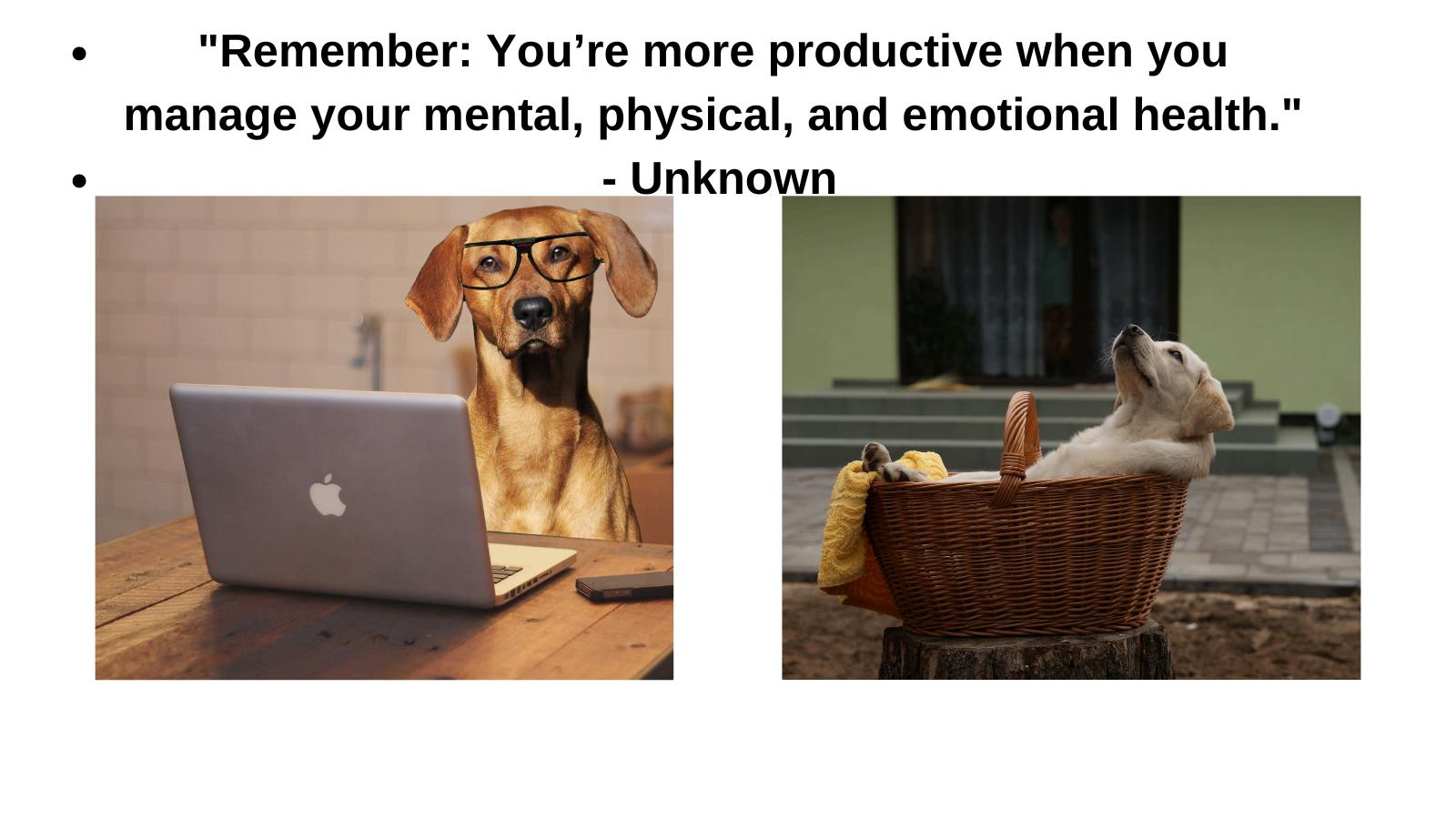
“Everybody laughs the same in every language because laughter is a universal connection.” – Jakob Smirnoff

E3 ADVOCACY - 83
References
McKinney,S.M.,Sieniek,M.,Godbole,V.,Godwin,J.,Antropova,N.,Ashrafian,H.,...&Suleyman, M.(2020).InternationalevaluationofanAIsystemforbreastcancerscreening.Nature,577(7788), 89-94.https://doi.org/10.1038/s41586-019-1799-6
Emergingtherapies:
1)https://www.ncbi.nlm.nih.gov/pmc/articles/PMC10354685/?report=printable
2)https://www.nejm.org/doi/10.1056/NEJMoa2304968?url_ver=Z39.882003&rfr_id=ori:rid:crossref.org&rfr_dat=cr_pub%20%200pubmed
3)https://ashpublications.org/blood/article/138/Supplement%201/2704/478718/ClinicalOutcomes-and-Treatment-Strategies-for
TheAgeofAnger:StrategiesforControllingaGrowingEmotionalCrisis
https://www.gallup.com/analytics/349280/gallup-global-emotions-report.aspx 1 https://www.mentalhealth.org.uk/sites/default/files/2022-09/MHF-boiling-point-report_0.pdf 2 https://newsroom.aaa.com/2022/12/going-in-reverse-dangerous-driving-behaviors-rise/ 3
ReadingforWell-Being
1- a-third-of-canadians-read-daily 2- canadians-and-their-leisure-time-in-2022-leisure-reading-study
3- news-room/questions-and-answers/item/stress
4- reading-reduces-stress-by-68-percent
5- The_Immediate_Effects_Of_Yoga_Humor_And_Reading_On_Stress
6- ncbi.nlm.nih.gov/pmc/articles
7- ncbi.nlm.nih.gov/pmc/articles
8- ncbi.nlm.nih.gov/pmc/articles
9- reading-well.org.uk
10- the-mental-health-benefits-reading
11- magazine/relationships/the-importance-of-community
Pediatric
1)https://cps.ca/en/documents/position/promoting-optimal-mental-health-outcomes-forchildren-and-youth
E3 ADVOCACY - 84 AI
Supporters


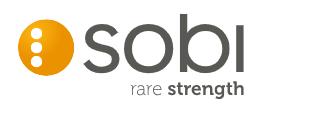

E3 ADVOCACY - 85
Heal Canada Team
Brigitte Leonard, Ph.D

BrigitteLéonardistheChiefScientificOfficeratHealCanada,aregisterednot-for-profit organizationadvocatingequitableaccesstoqualityhealthcareacrossCanada Shehad theprivilegeofworkinginPharmaforover20years,contributingtobringinglifechangingtreatmentstopatientswiththehighestethicalstandards.Now,shewantsto shareherknowledgeandutilizeherscientific,strategic,andcommunicationskillstohelp thepatients’community
SheobtainedherPh.D.inBiomedicalSciencesfrom UniversitédeMontréalin2003.Her doctoralresearchwasconductedunderthesupervisionofDr.Denis-ClaudeRoyatGuyBernier,Maisonneuve-RosemontHospitalResearchCenter Shedevelopedaquantitative diagnosticassayinnon-Hodgkin'slymphomaandevaluatedtherelevanceofthismarker inthepatient'soutcome
Wendy Reichental, B.A.

WendyReichental,ProgramManager,HealCanada.WendyholdsaB.A.andaDiplomain HumanRelationsandFamilyLifeEducationfromMcGillUniversity.Sheiscertifiedinfoot reflexology.
Throughout her career, Wendy has showcased her insightful perspectives through her writings,whichhaveappearedinpublicationssuchasTheMontrealGazetteandOttawa's Globe andMail. Shehasalsocontributedtospecialized platforms like Booming Encore and Refresh Reflexology Magazine, demonstrating her versatility in addressing diverse audiences.
Wendy’swritingshaveappearedinpublicationslikeTheMontrealGazetteandOttawa's GlobeandMail.SheisaregularcontributorforBoomingEncore,nicheplatformssuchas RefreshReflexologyMagazine,andnumerousonlineforums.Wendy'suniqueobservation ontheinitialdaysofthepandemiclockdowniscapturedintheanthologyChroniclingthe Days: Dispatches from the Pandemic, published by Guernica Editions in the spring of 2021.
Cheryl
Petruk, MBA B.Mgt.

CherylA.Petrukisamultifacetedprofessionalwhosecareerspansacrosspatient advocacy,business,andpost-secondaryeducation,showcasingherdedicationtomakinga significantimpactineachoftheseareas.
Cheryl'stransitionintopatientadvocacywasdrivenbyapassionfromherfamily circumstancesandadeepcommitmenttoensuringpatients'rightsandaccesstocare. Cherylhasworkedtirelesslytobridgethegapbetweenthehealthcaresystem,patients, andpharmastakeholders,ensuringthatpatients'voicesareheardandtheirneedsaremet. HerworkinvolvescollaboratingwithStakeholdersandPatientAdvocacyOrganizations, lobbyingforpatientcentricity,andprovidingpatientsupportandguidance.Cheryl's empatheticapproachanddedicationtoadvocacyhavemadeherarespectedfigureinthis field,admiredbypatients,healthcareprofessionals,andfellowadvocates.
Cherylalsoleadsandistheleadfacultymemberat CACHEducation,PatientAdvocacy Training.
E3 ADVOCACY - 86









 Cheryl Petruk, MBA, B.Mgt.
Cheryl Petruk, MBA, B.Mgt.



















 Brigitte Leonard, PhD. Chief Scientific Officer, Heal Canada
Brigitte Leonard, PhD. Chief Scientific Officer, Heal Canada

























 Janice D’souza, M.S.W., R.S.W. Insightful Minds Therapy Inc.
Janice D’souza, M.S.W., R.S.W. Insightful Minds Therapy Inc.


 Joanna Pozzulo, Ph.D. Chancellor’s Professor Department of Psychology Director,
Joanna Pozzulo, Ph.D. Chancellor’s Professor Department of Psychology Director,
























































































